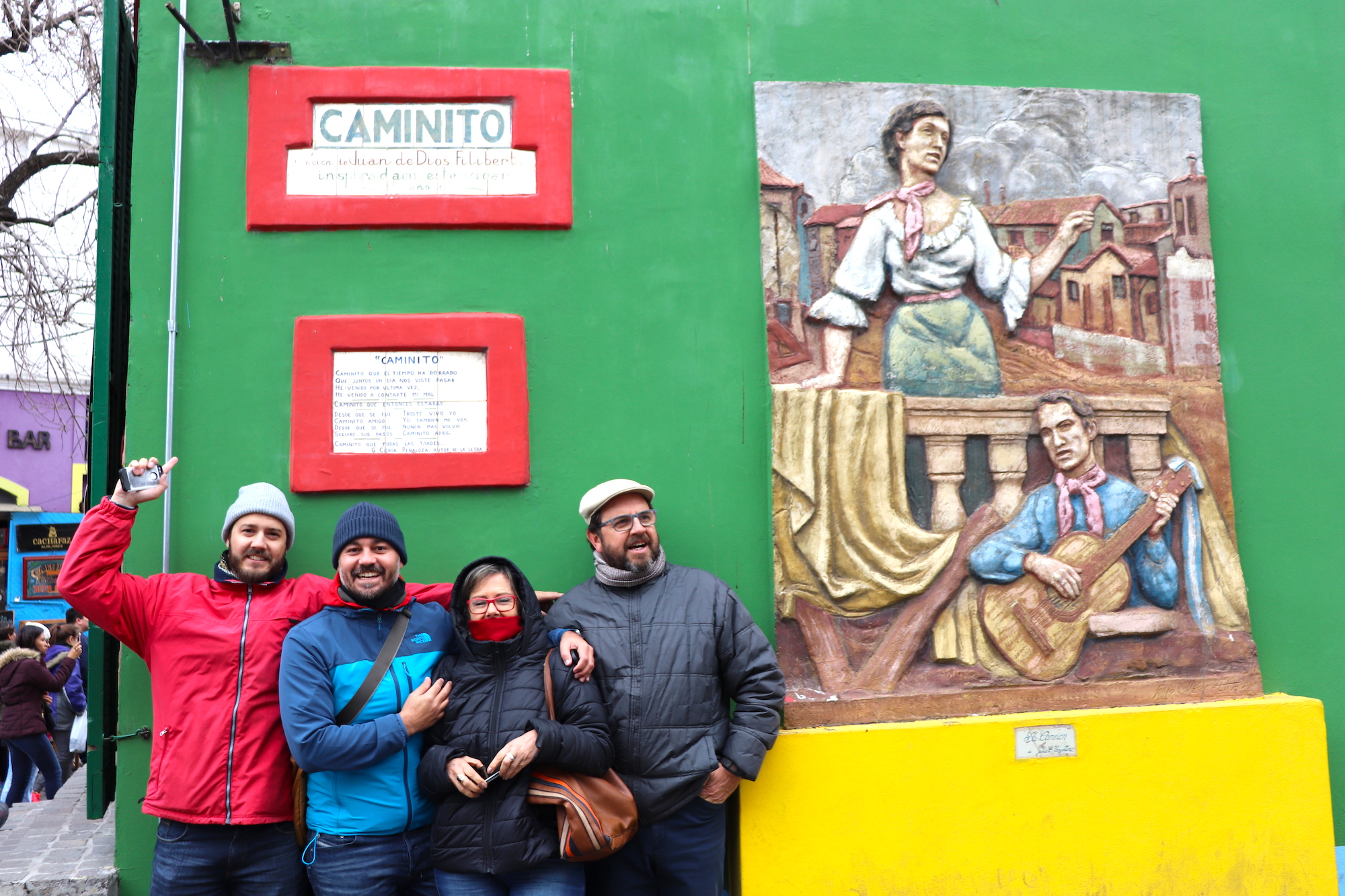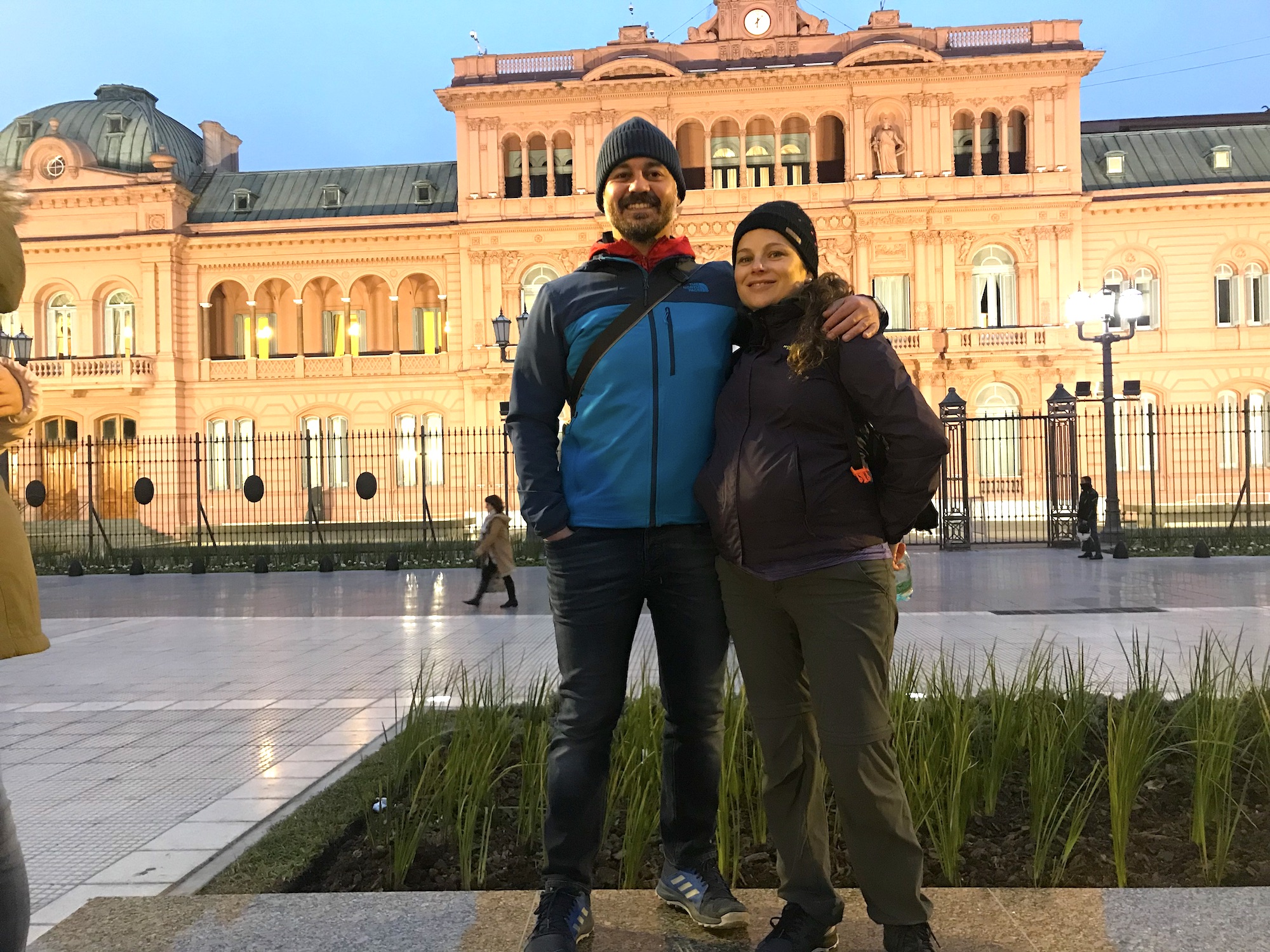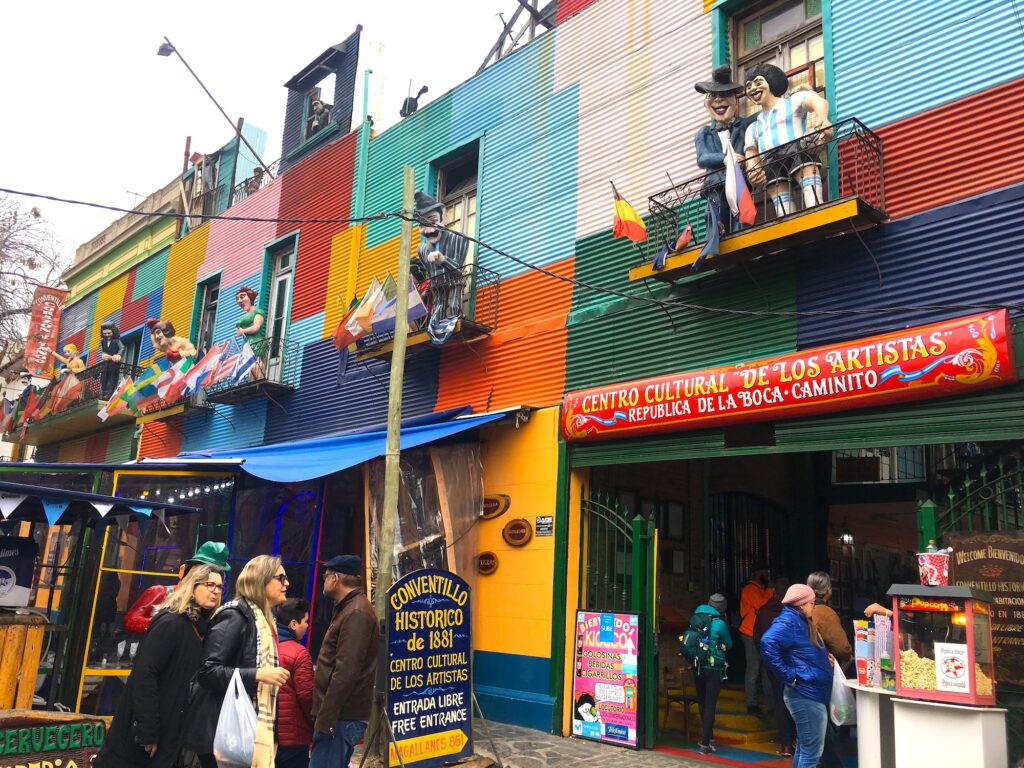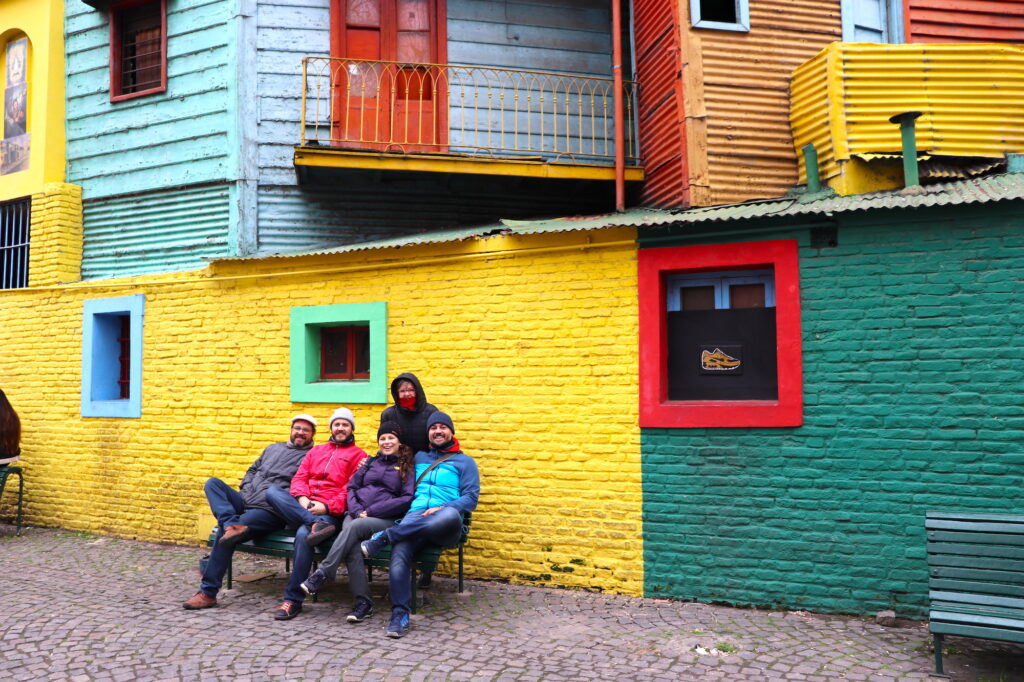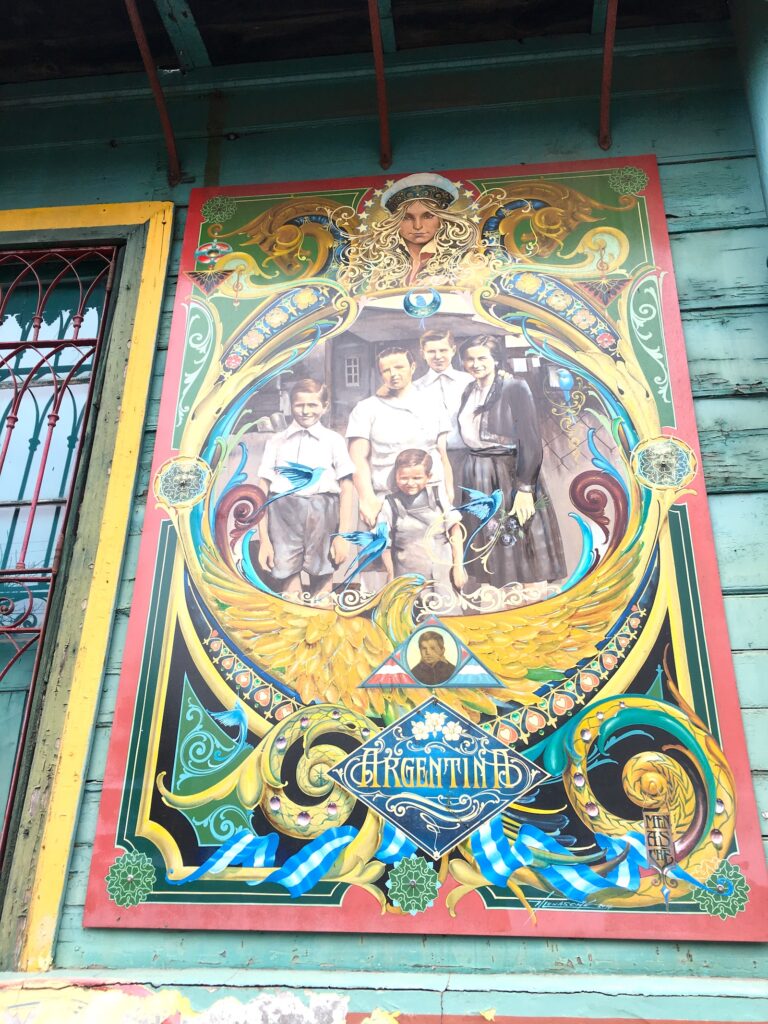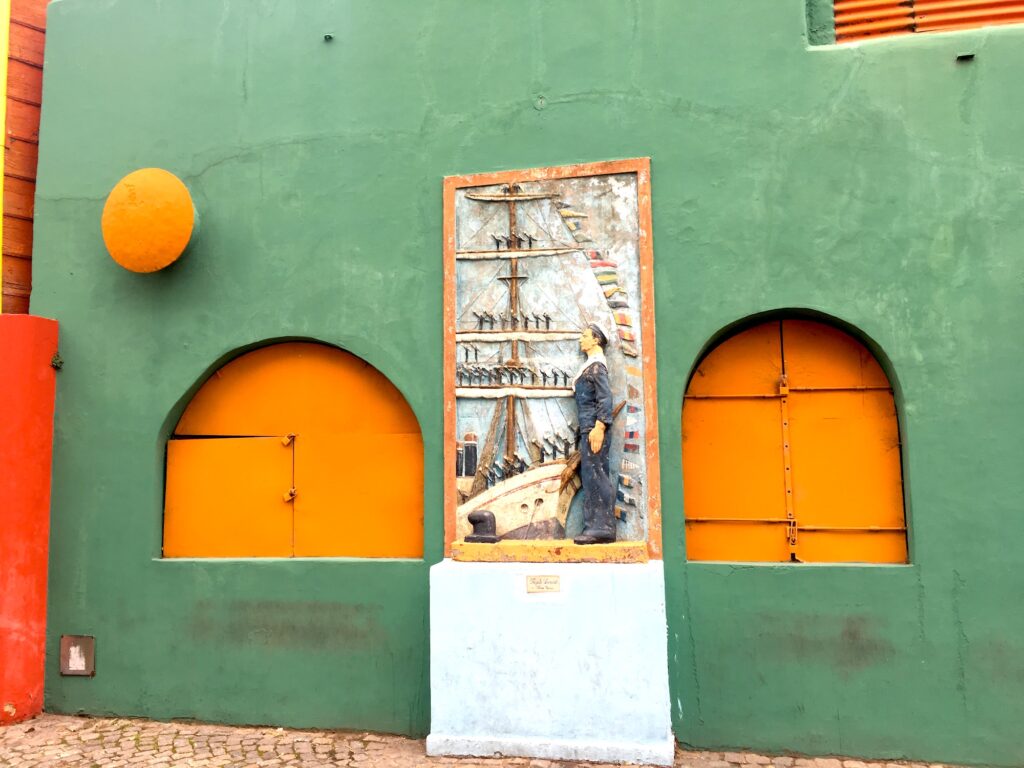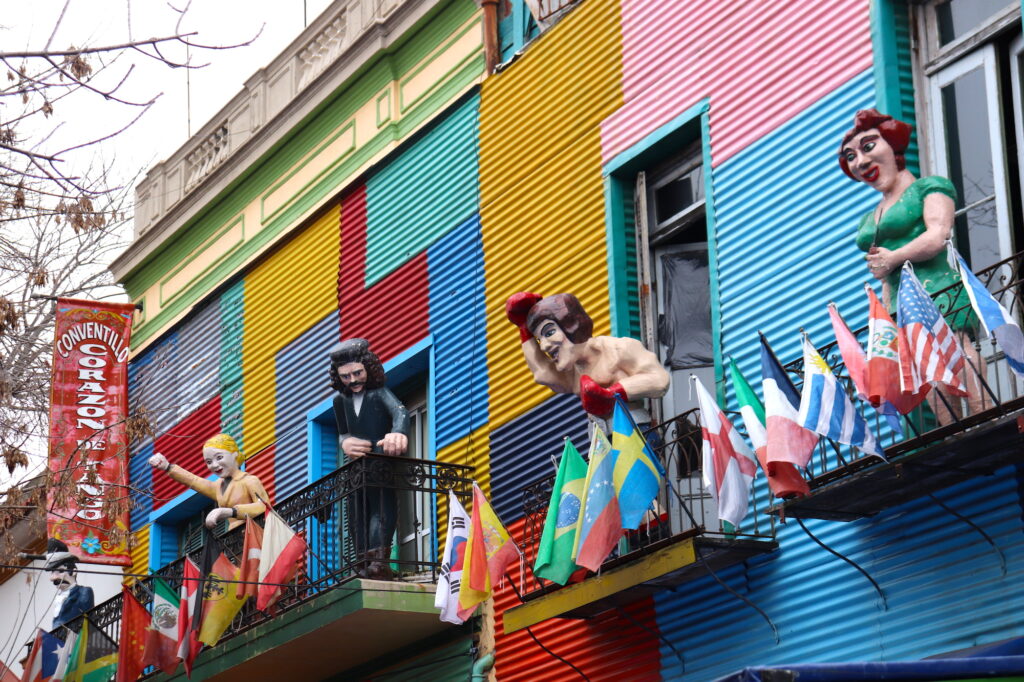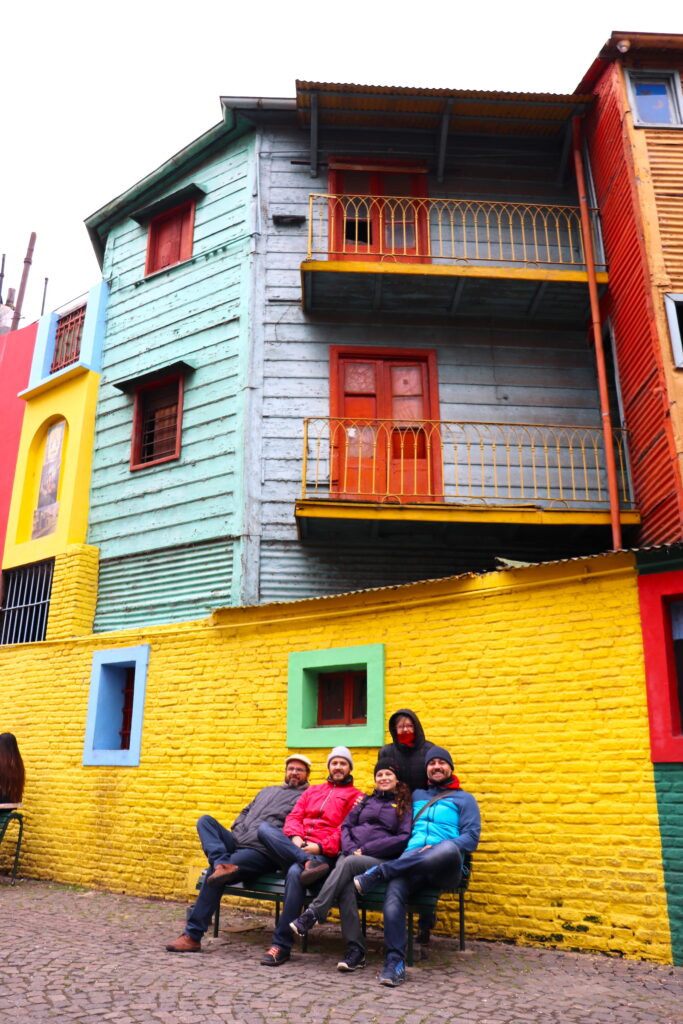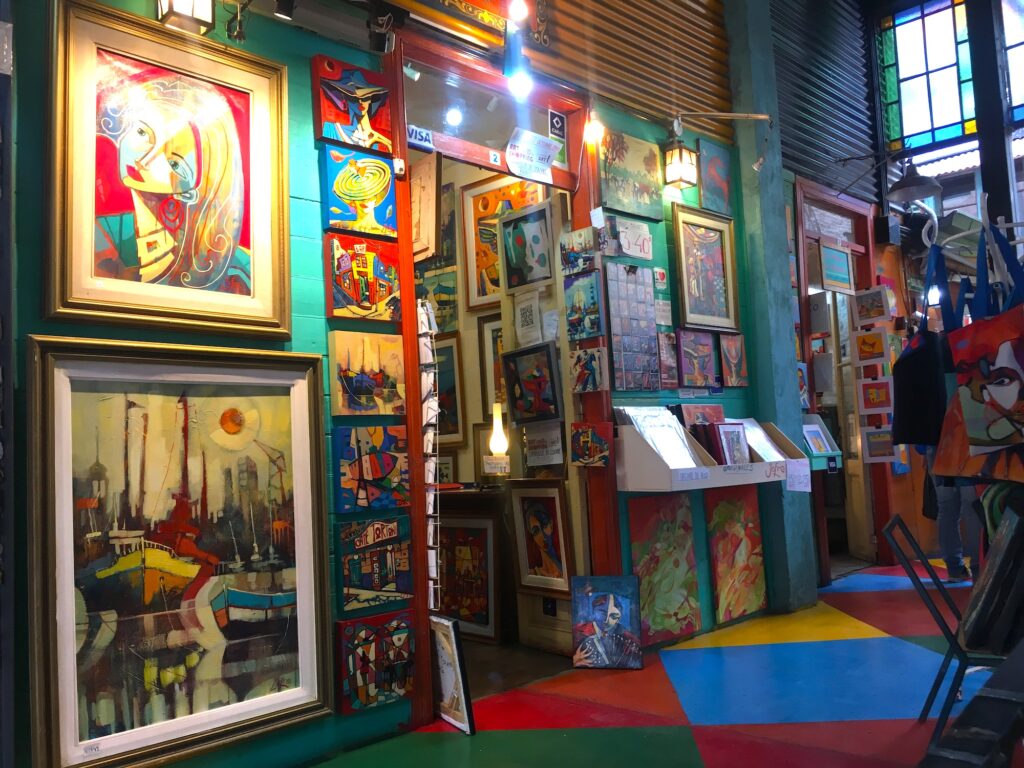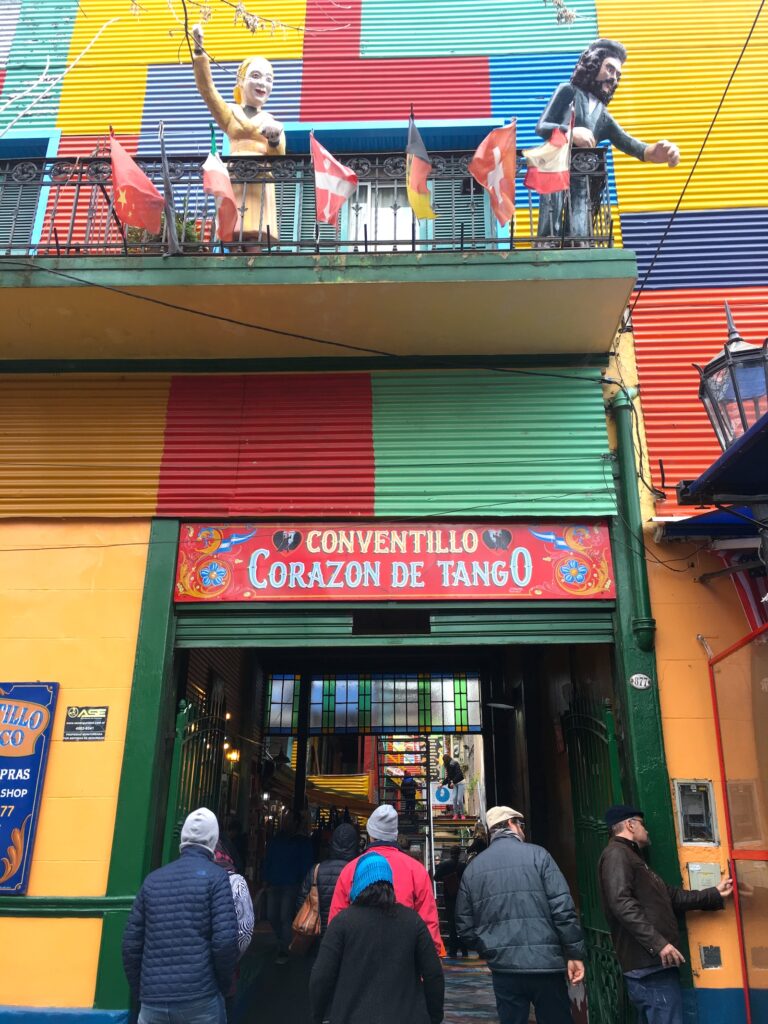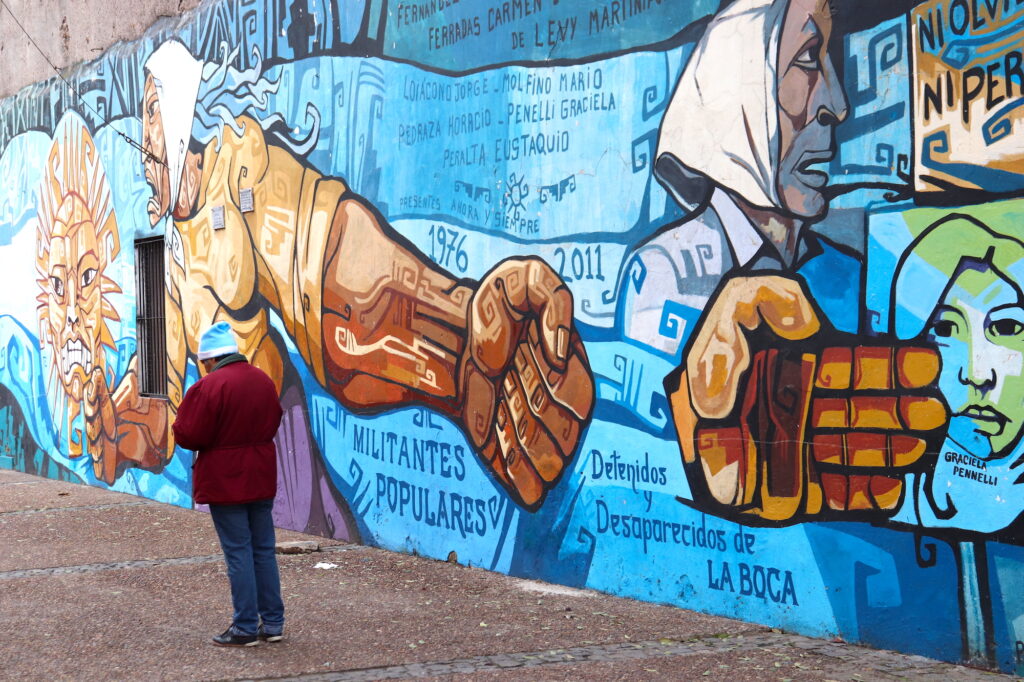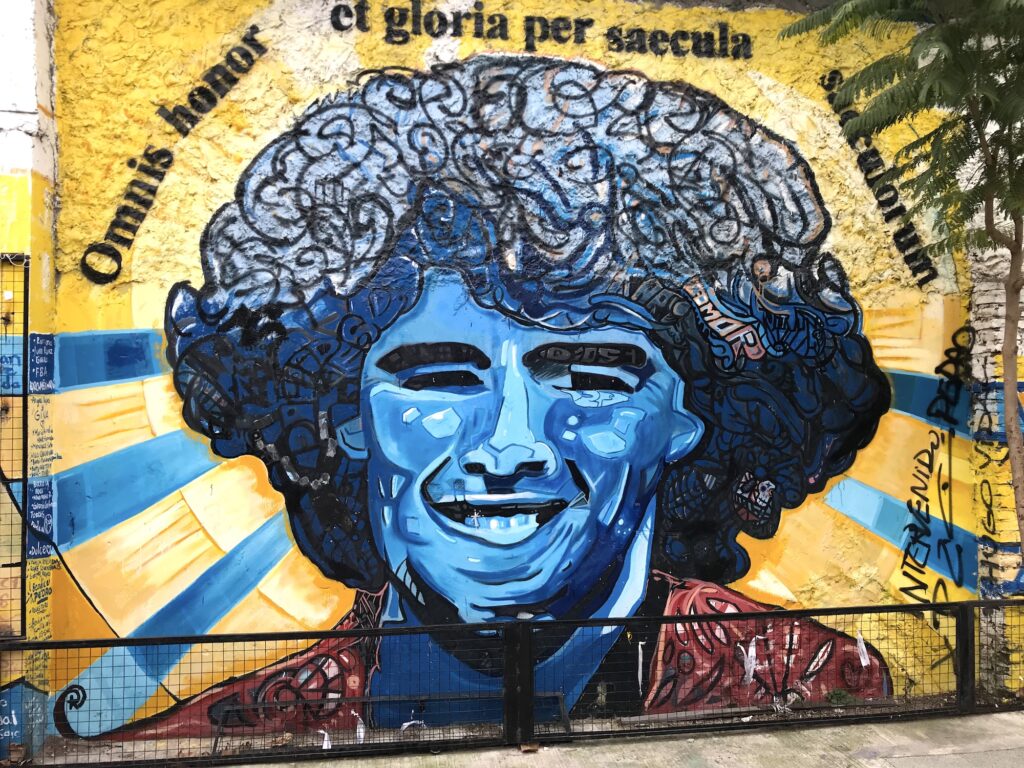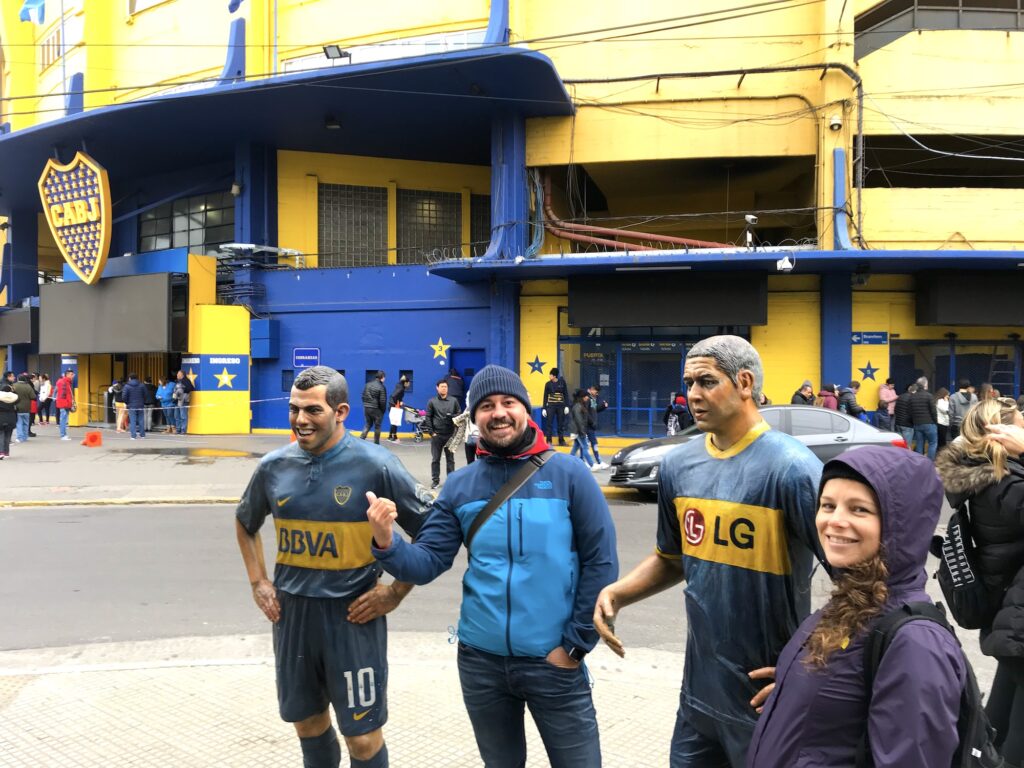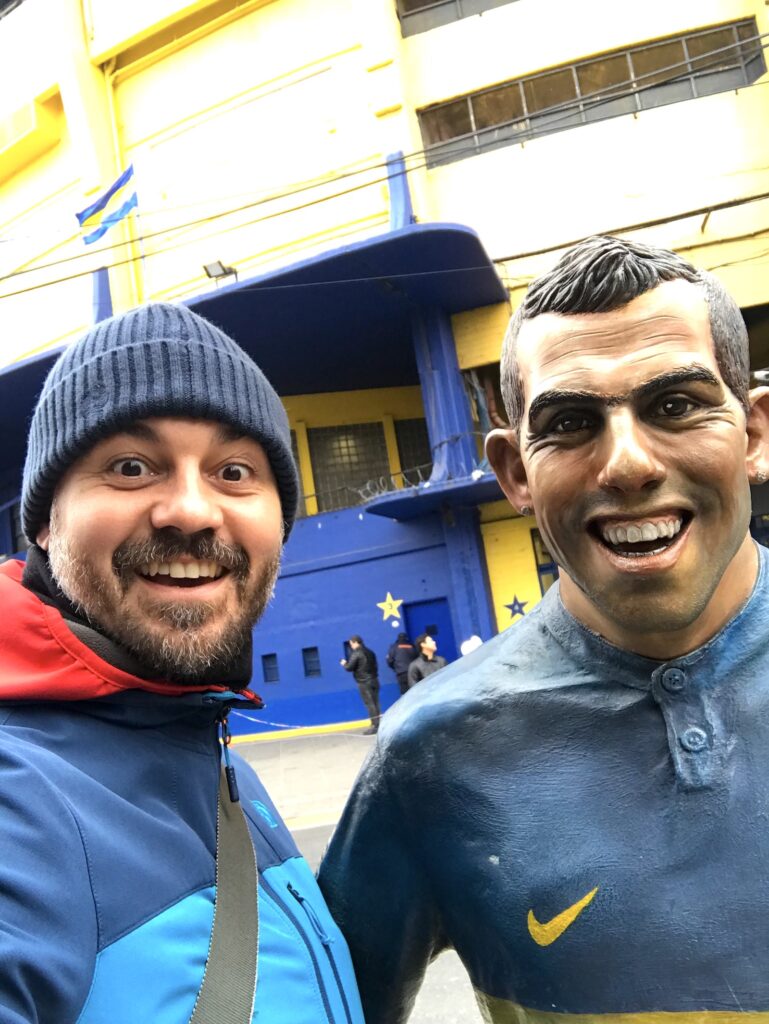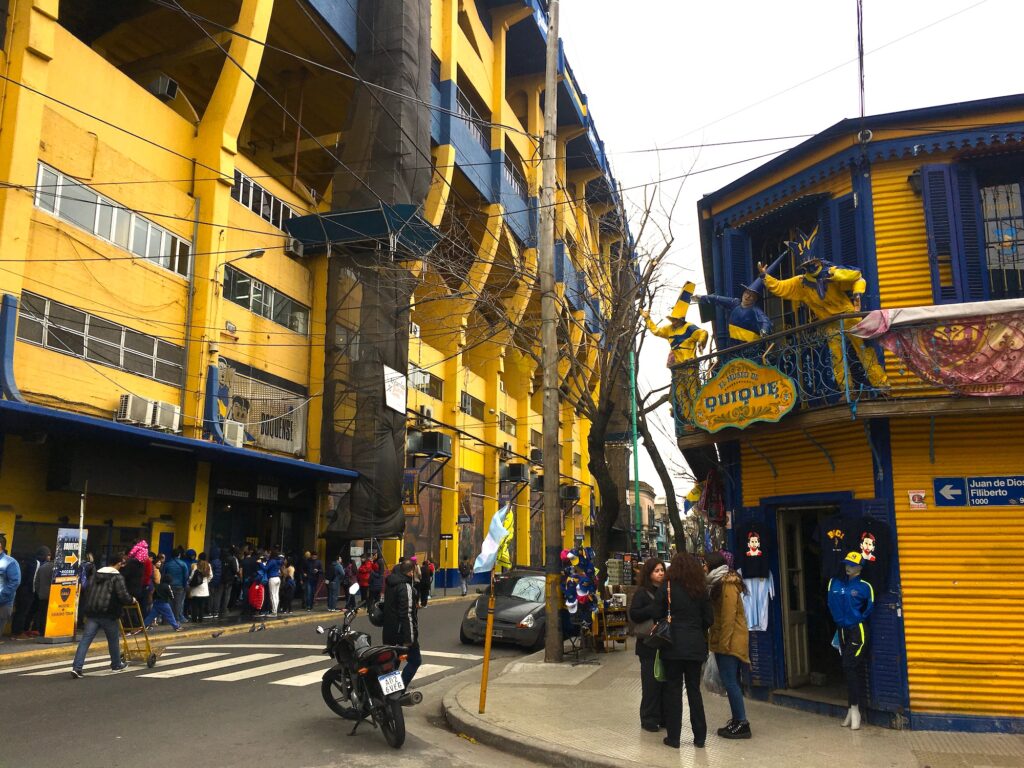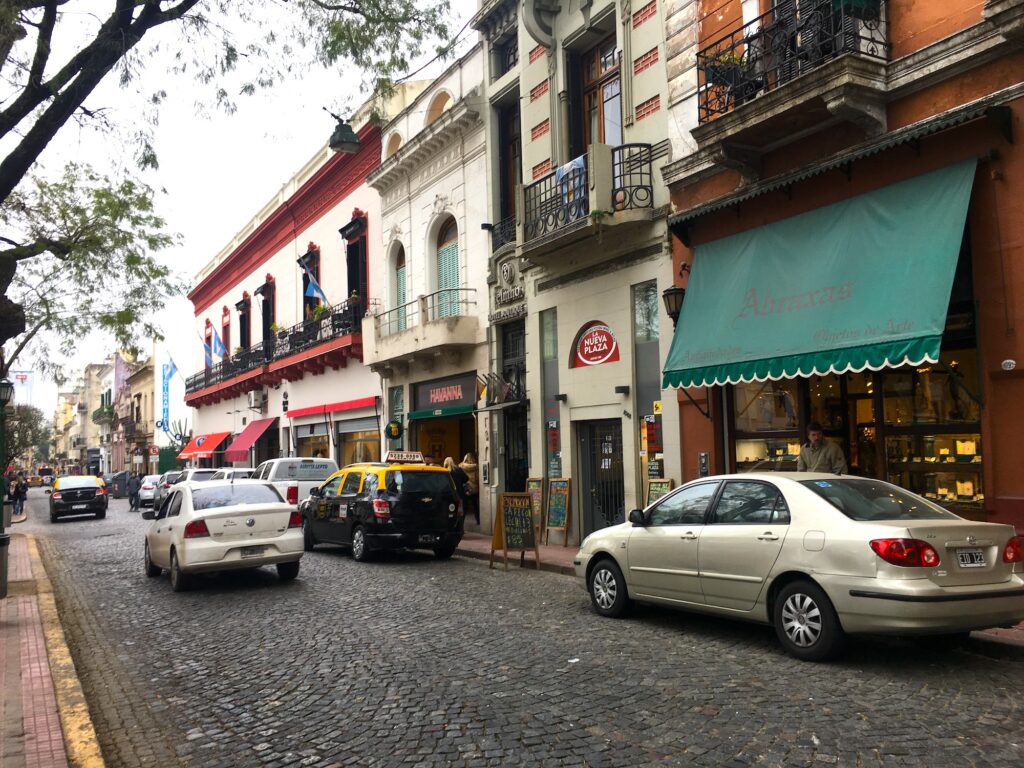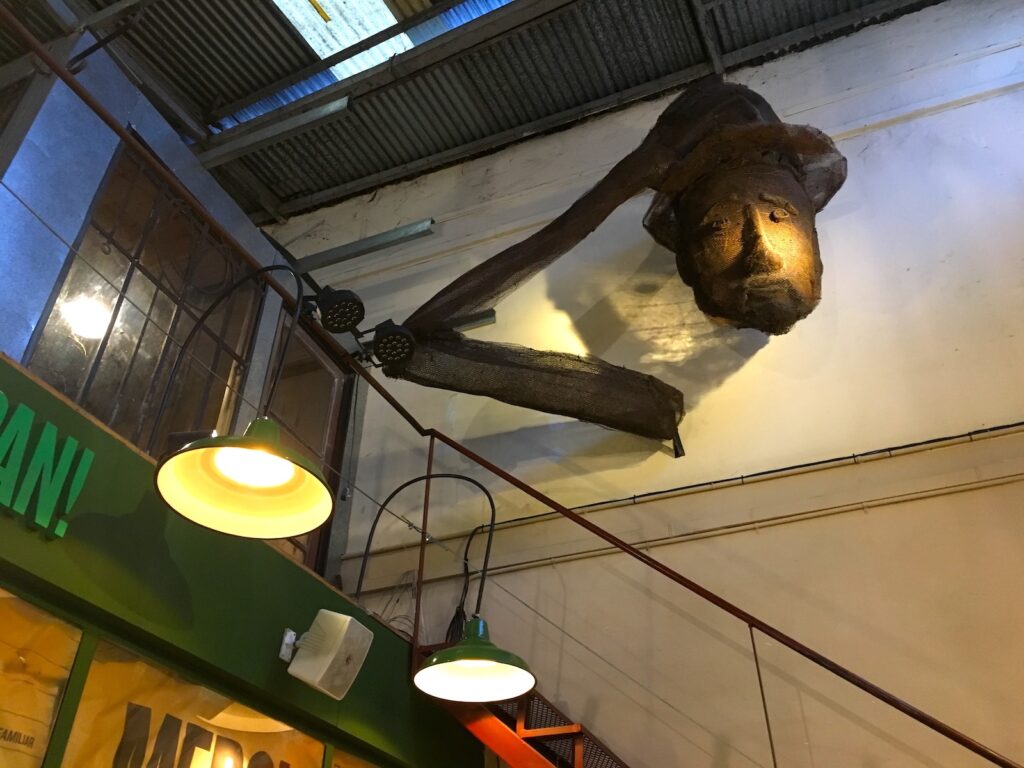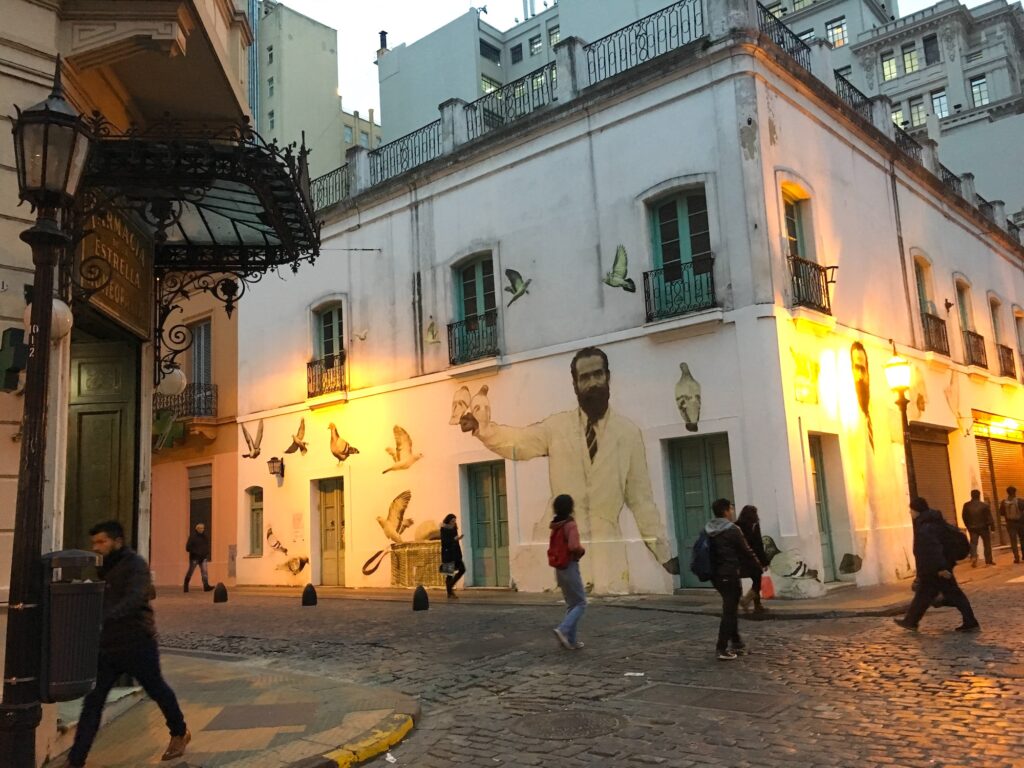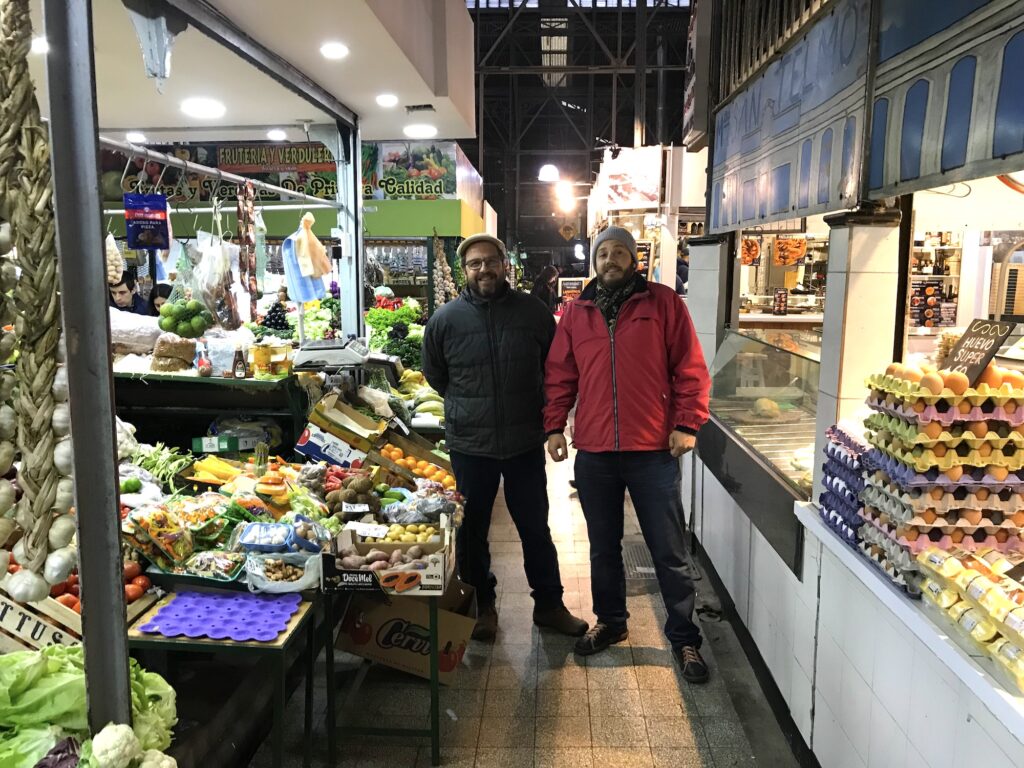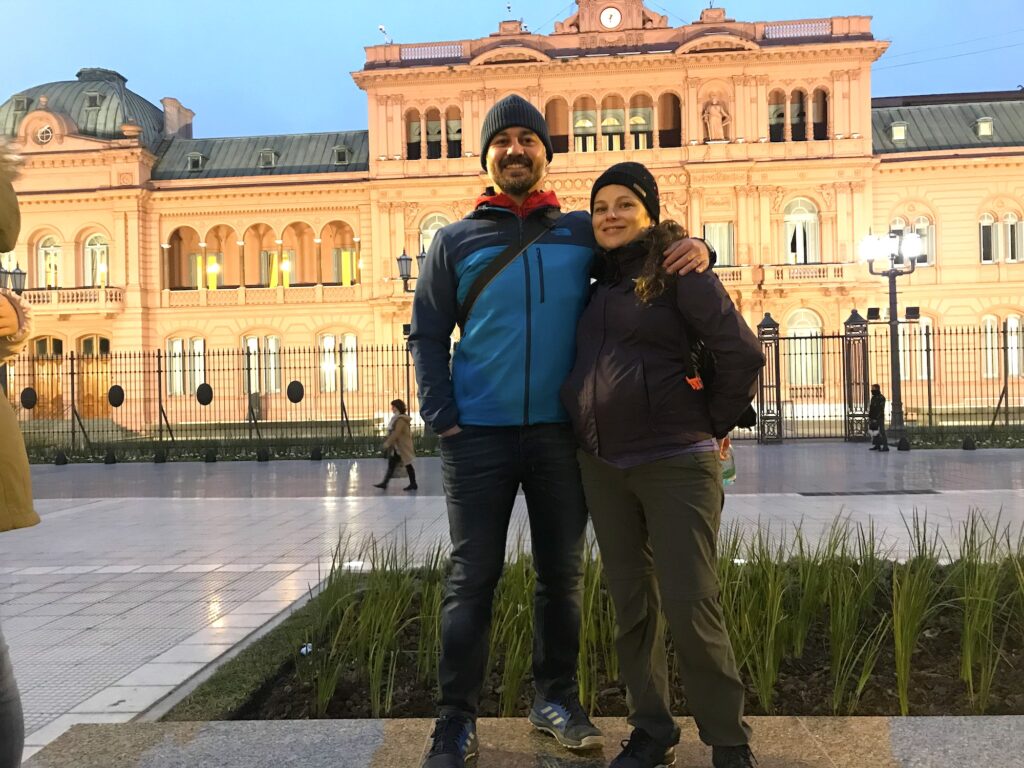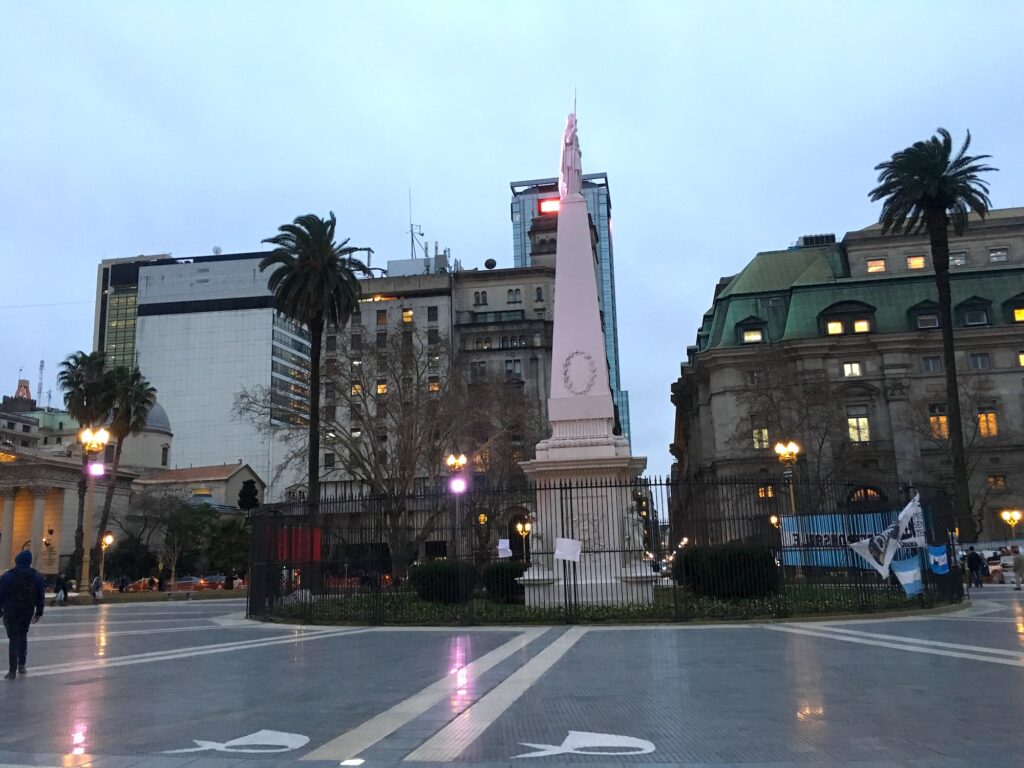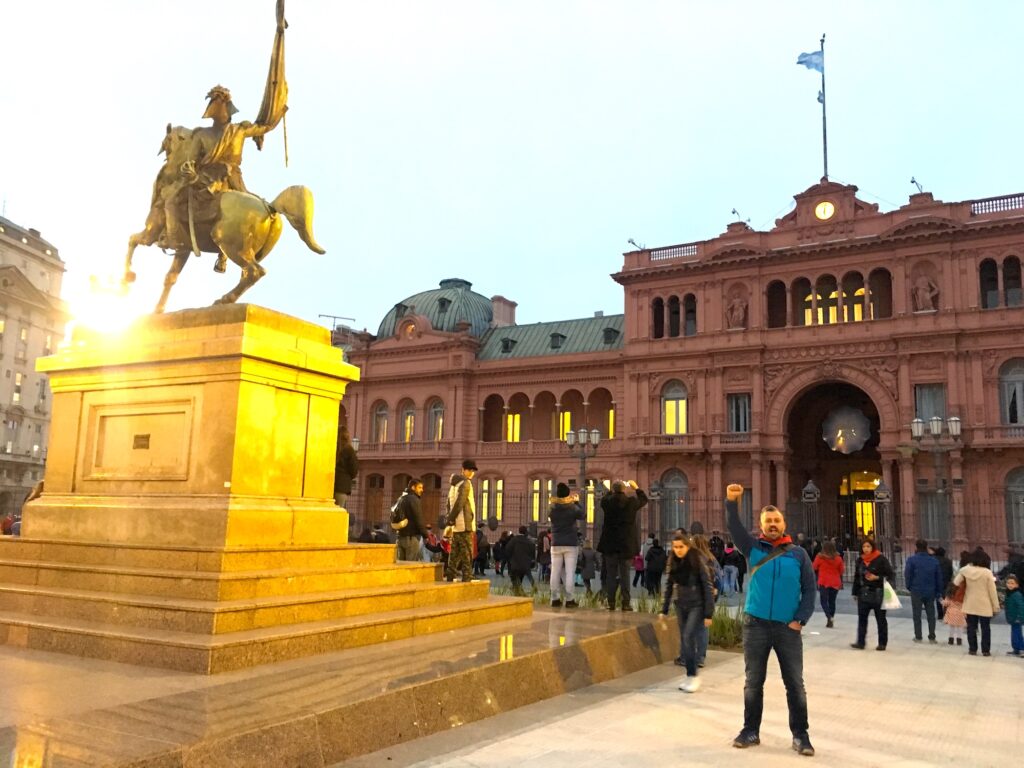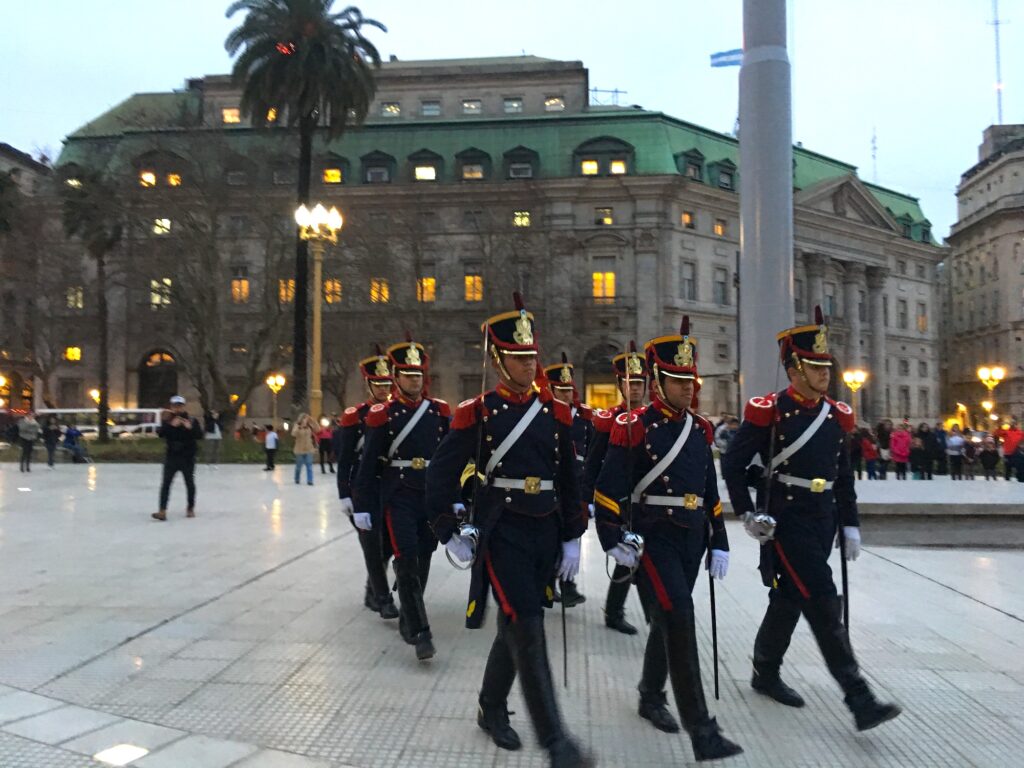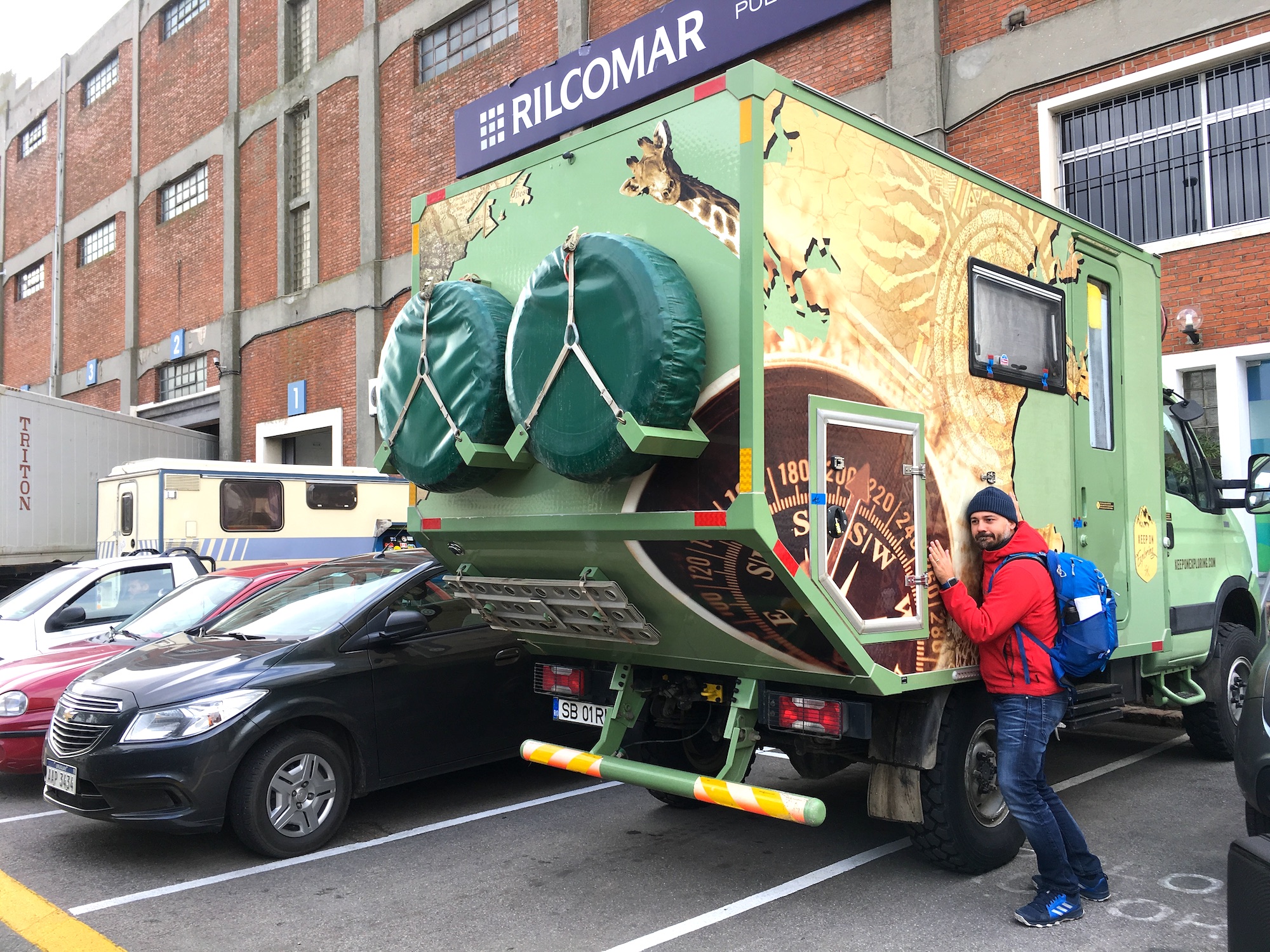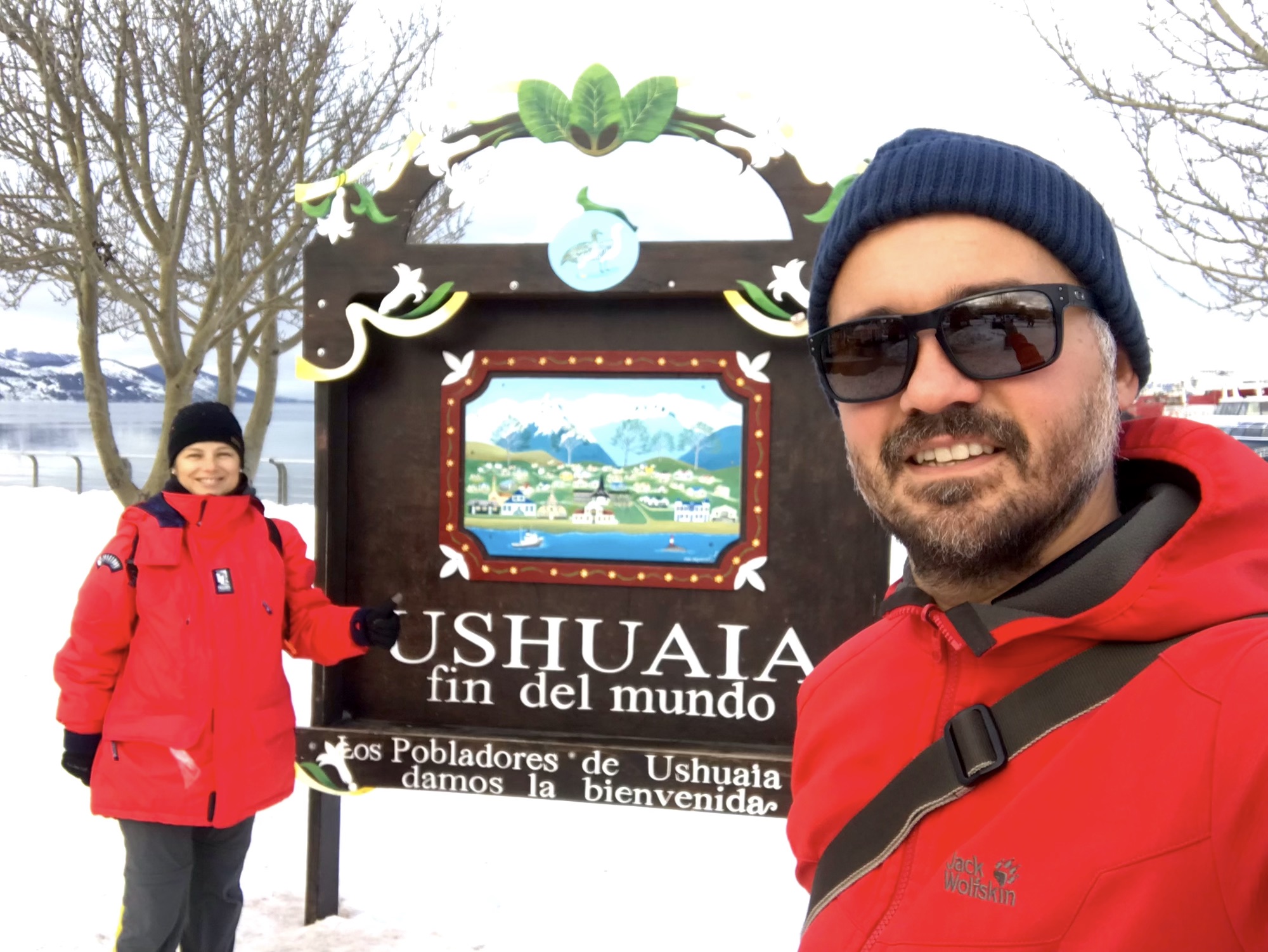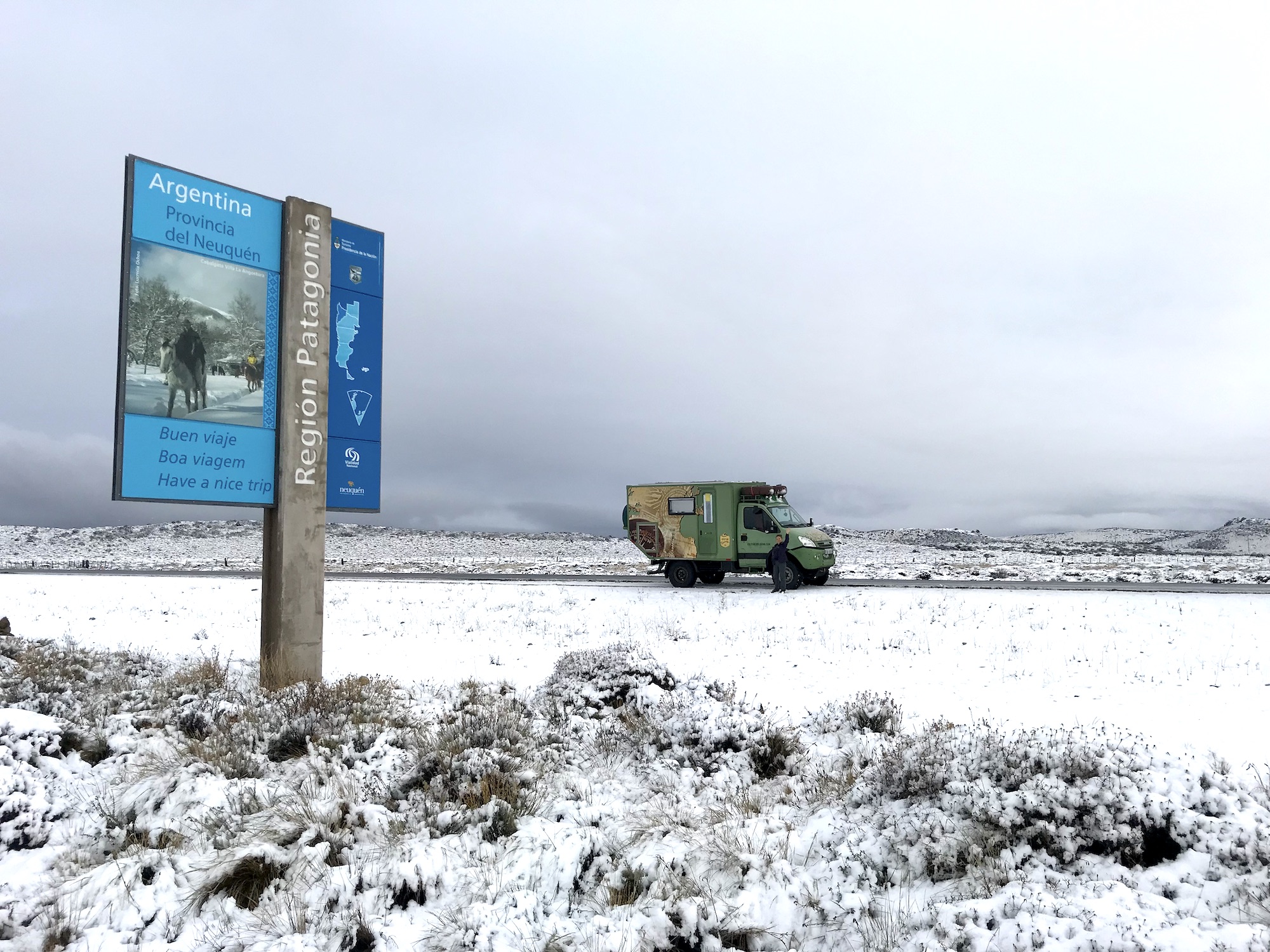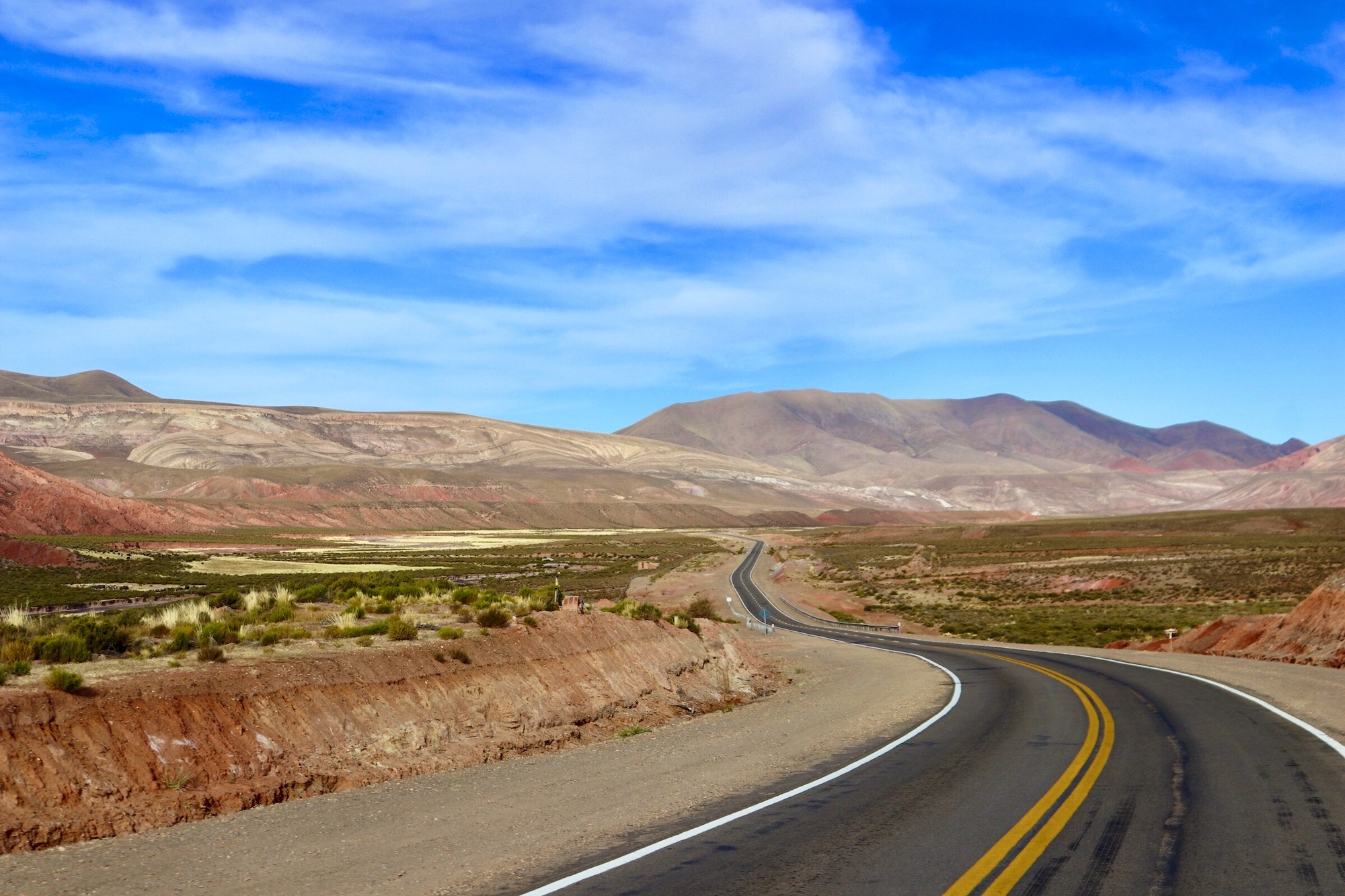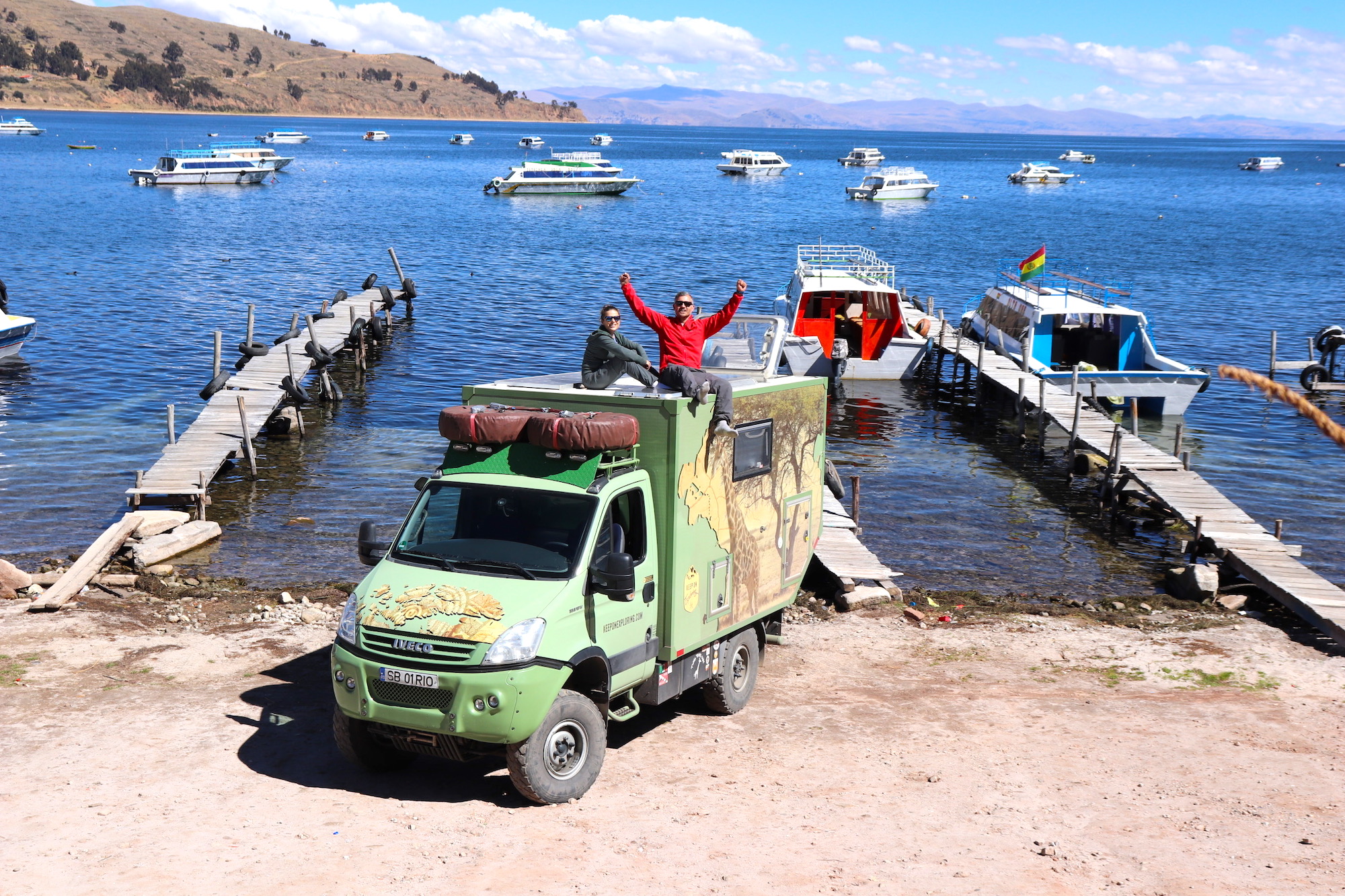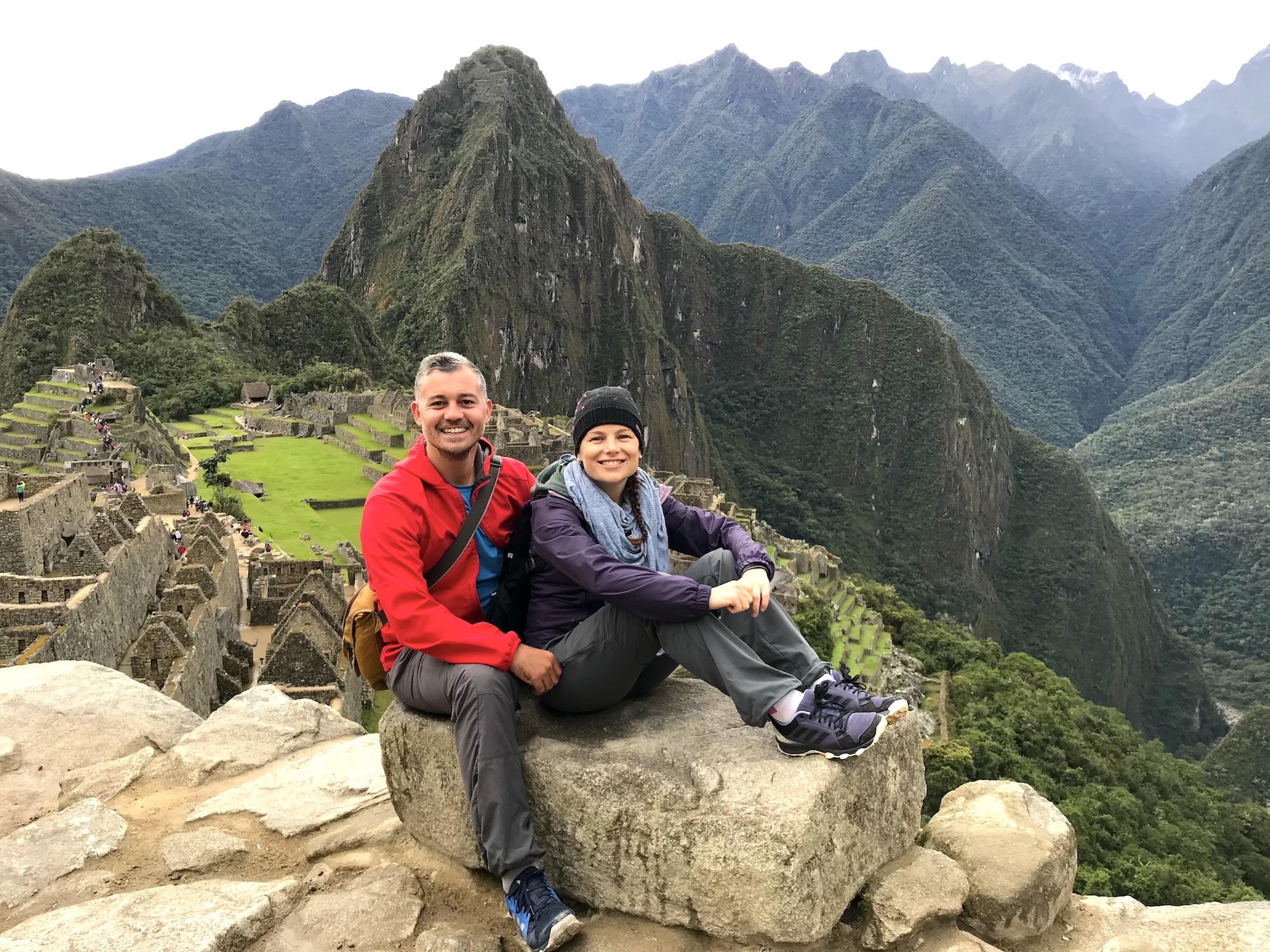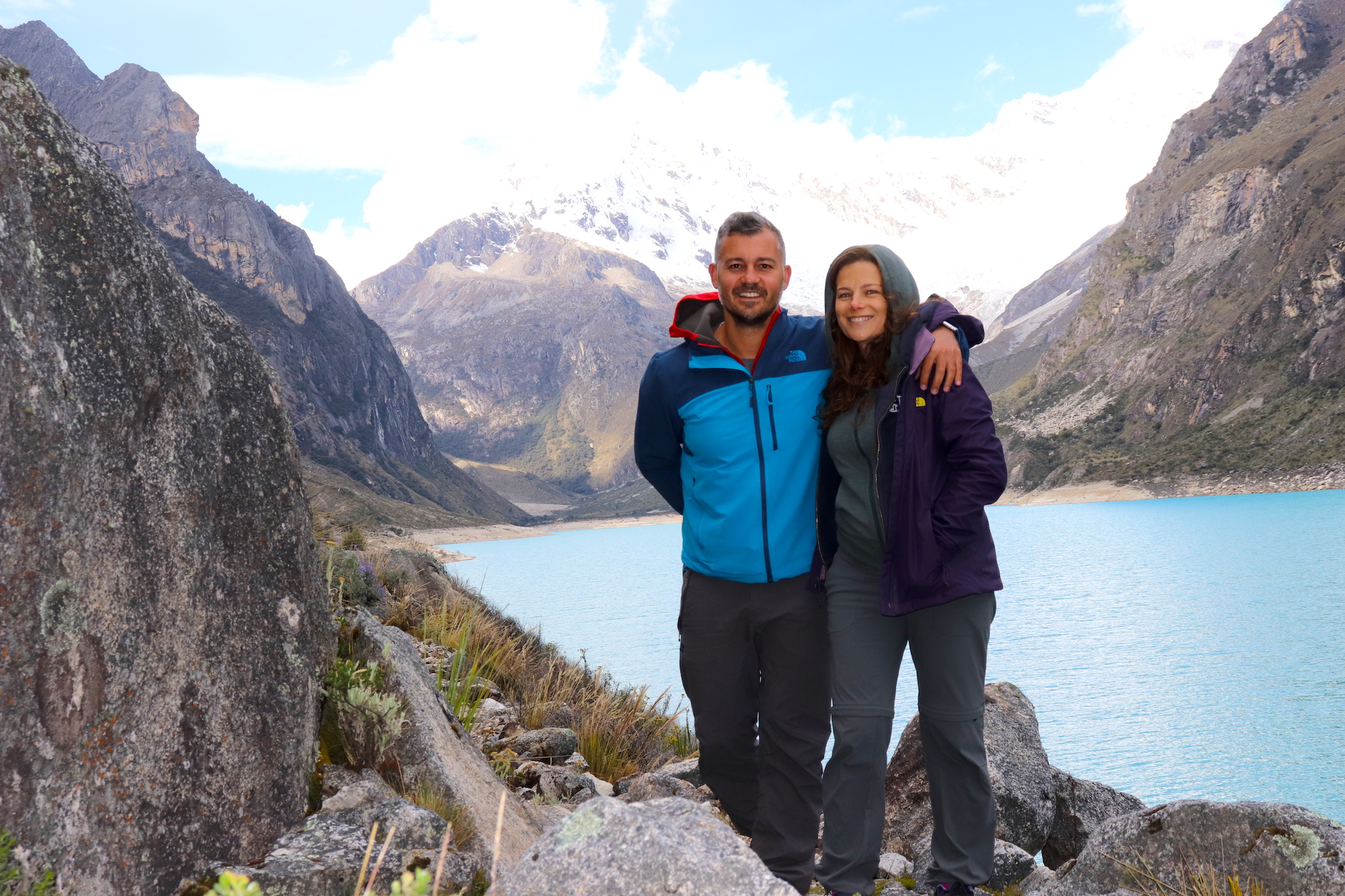Buenos Aires inspired us with its strong European heritage, Beaux-Arts architecture, delicious cuisine and the fascinating story of Eva Perón.
After seven days driving continuously from Ushuaia we made it just in time to meet our Brazilian family. They came to greet us in the capital of Argentina. It was a time to celebrate and indulge into the much expected Argentinean beefsteaks.
We discovered together the various facades of the capital from its aristocratic neighborhoods like Recoleta to the colorful La Boca district. Buenos Aires showed us just a bit of how much the capital of Argentina has to offer.
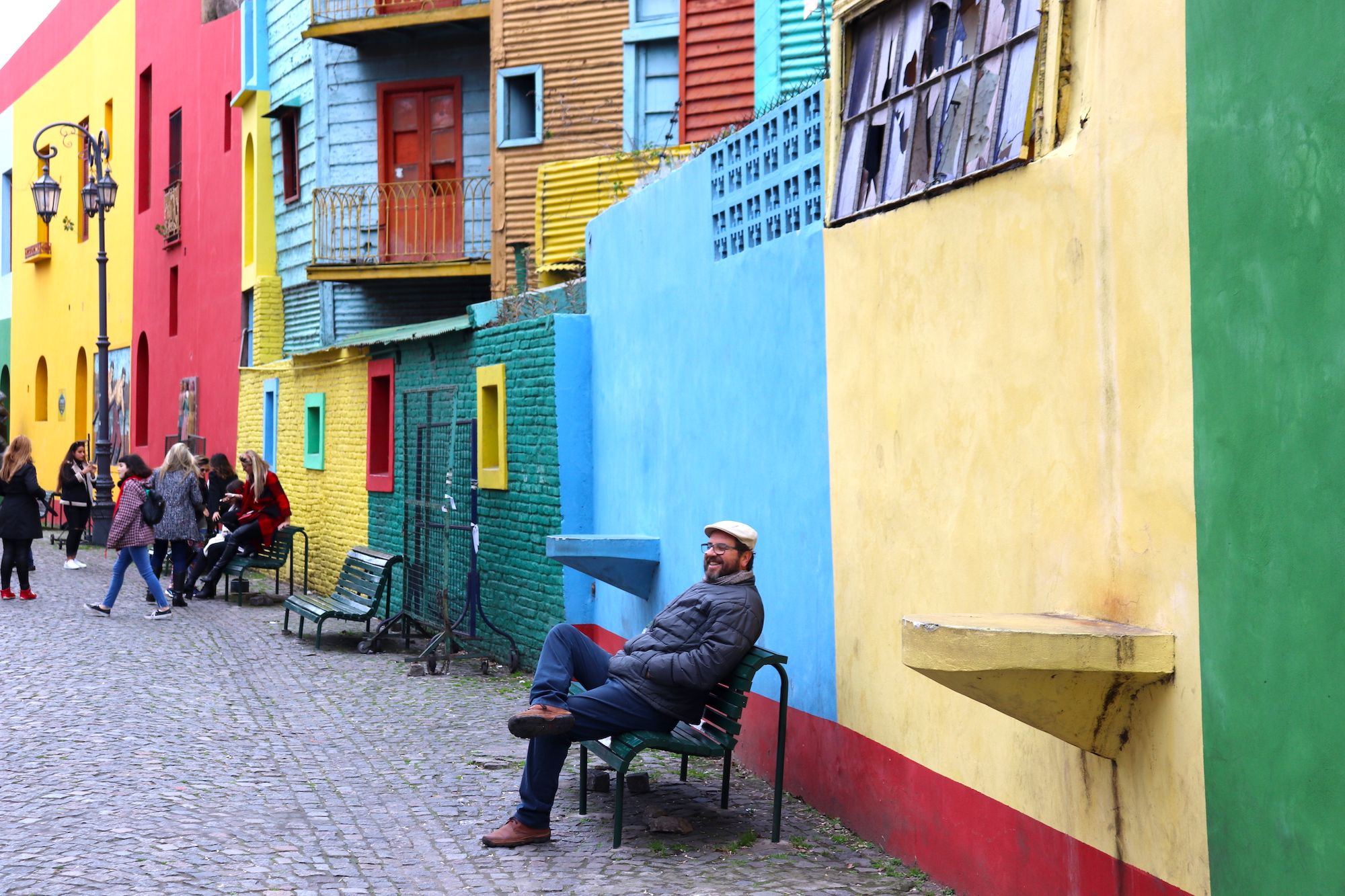
Warm welcome from our Brazilian family
As soon as we arrived in Buenos Aires we received a warm welcome from our always supportive Brazilian family. JP’s godparents, Teca and Toco together with their son Bruno and partner Heleine travelled from Brazil to meet us.
They come from Rio Grande do Sul state, a beautiful region south of Brazil dominated by endless pampas and cattle farming. They have a lot more in common with the Argentinian and Uruguayan culture rather than with the tropical Brazil. JP's family are proud Gauchos (the symbol of the brave horseman dedicated to cattle farming). The Gaucho is an emblematic figure for Argentina and Uruguay too.
“We are so happy we made it. We lost one of our car wheels on the way here”, aunt Teca was laughing. “Luckily it happened just next to a car workshop and we fixed it on time”, she added. “How long did you drive to get here?”, I asked. “We left Santana do Livramento at 5am. It took us 8 hours”.
“It’s quite amazing you live so close to Buenos Aires. I have been dreaming for such a long time to come here, while for you it’s just a stone throw away”, I added.
“Yes, we grew up coming to Buenos Aires and we love it”, Teca added smiling.
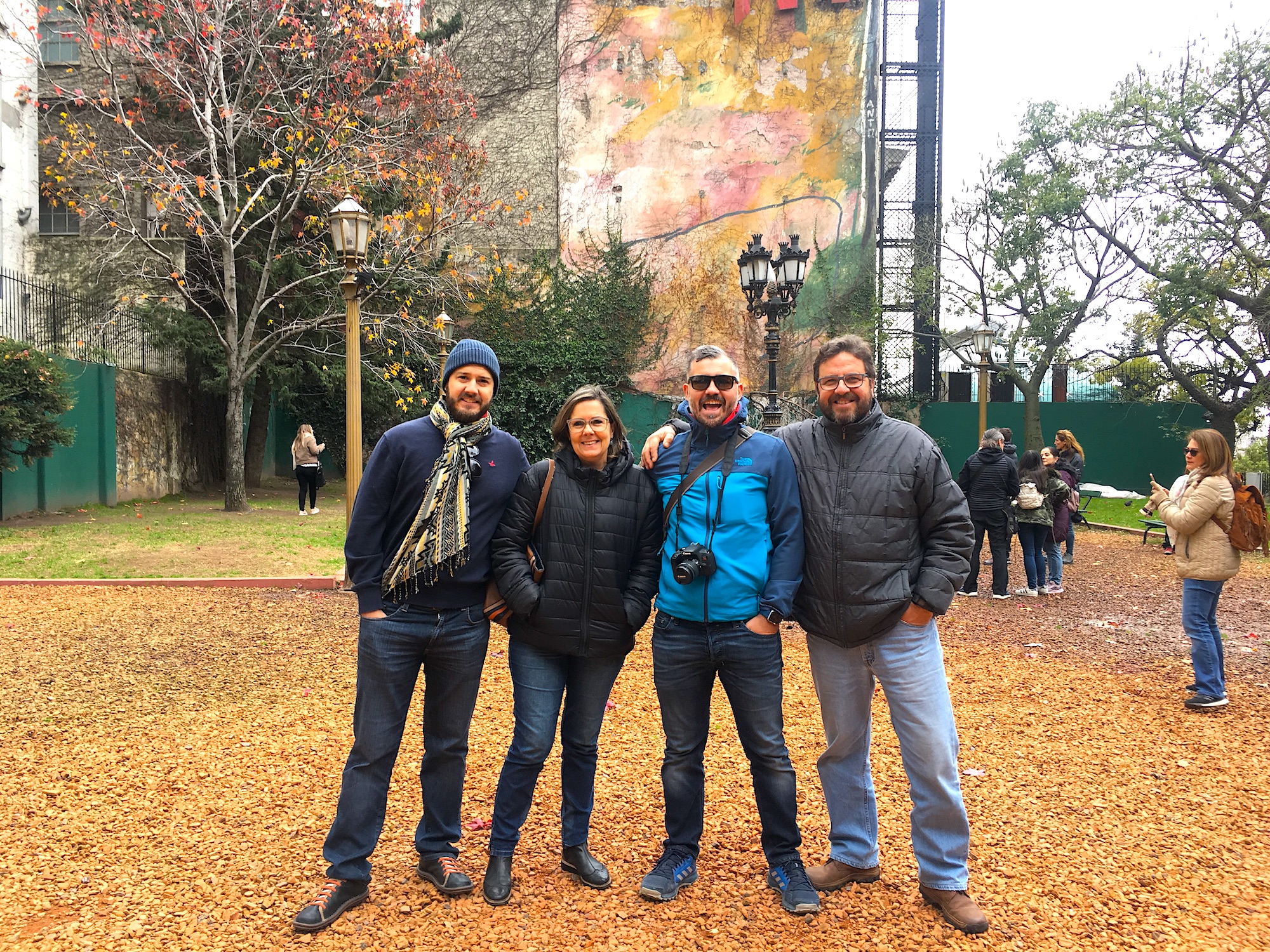
The much expected beefsteak dinner
We parked Brutus in a secure parking lot next to the “Buquebus" station and departed for the much expected dinner. We choose a traditional beefsteak restaurant nearby the Obelisk monument of Buenos Aires. Familiar or not familiar with the good beefsteaks, we were all in for the treat.
From the driving days in solitude we were suddenly embraced by familiarity and comfort. “Wow! You have such a big belly already”! my aunt exclaimed with a big smile on her face. She filled up my arms with presents for the baby. “JP you left your beard growing. You two managed such an amazing trip!”, she was looking so proud at him.
Celebrating the encounter we ordered the traditional beefsteaks accompanied by the local beer and red wine. Uncle Toco couldn’t get enough of those steaks, although he eats them every day at his farm. The grilled to perfection fresh meat, drinks, good mood and laughter kept pouring at our table.

Fascinated about Buenos Aires
I always dreamed to visit the city of Buenos Aires inspired by its tango scenes, bohemian atmosphere and latin spirit. My expectation were to pass cobble stone alleys full of restaurants and bars with people dancing tango on the streets. I thought I would hear live bands playing in the background and see curious neighbors looking out from their colonial balconies.
But since it was wintertime, we discovered instead the aristocratic neighborhoods of Retiro, Recoleta, San Telmo and Plaza de Mayo. They were presented to us by a local tourist guide. It was fascinating to learn more about Eva Perón, as well as to discover the popular La Boca neighborhood.
“Argentina was conquered by the Spanish Empire in the 16th century. It declared its independence from Spain after several civil wars by the end of the 19th century”, the tour guide introduced us briefly into the history of the country.
“Argentina's name comes from “Argentum” which in Latin means silver. The origin of the name goes back to the first voyages made by the Spanish conquerers to Rio de la Plata, the river that crosses the capital. There were great amounts of silver (“plata”) found on these territories”, I was listening the guide imagining all that silver pouring into the Spaniards’ expedition boats.
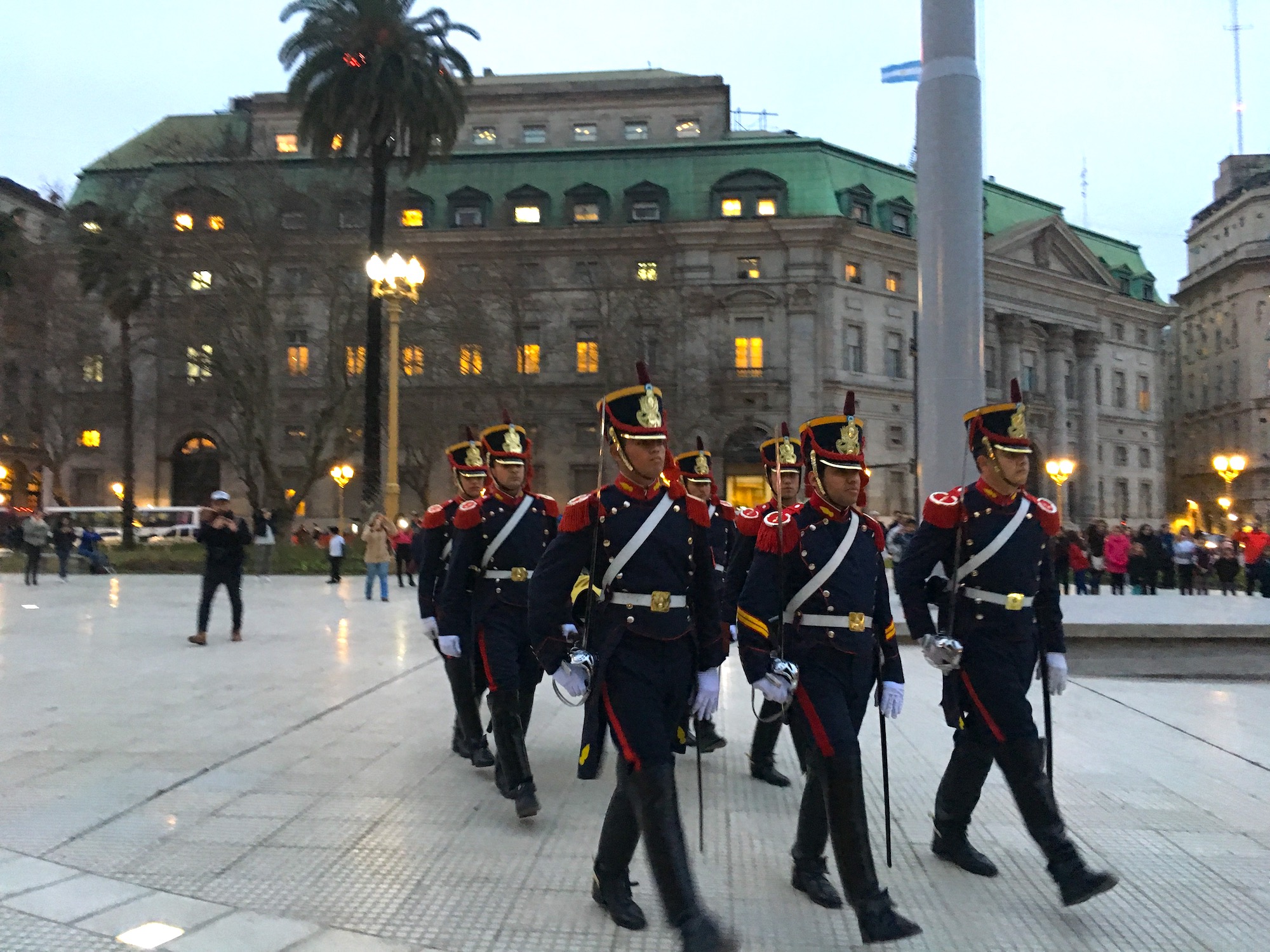
Buenos Aires - The city of “Good Airs”
“The first name of Buenos Aires was given by its founders in the 16th century. It was "Real de Nuestra Señora Santa María del Buen Ayre. In time it stayed with the last part of the name “Buenos Aires". It means “Good Airs” or “Fair Winds””, the guide explained.
“The city of Buenos Aires thrived in the 19th century due to the wealth generated by the nationalization of the customs. Adding to this the railroad development, the futile pampas, the exportation of wool, row materials, cow meant, Argentina was booming”, we were listening absorbed.
We visited the former residential houses of the rich families of the 19th century, such as the “Palace of Macha”. Looking at the aristocratic architecture of Retiro and Recoleta, I understood then why Buenos Aires is called the “Little Paris”.
The buildings design imitate considerably the European style of the 19th and 20th century. I had the impression that the immigrants of those times wanted to create their “little Europe” in a faraway Argentina.
Today Buenos Aires it is the most visited city in South America famous for its strong European heritage. The artistic scenes with hundreds of theater plays per week, puts it ahead of London, Paris and New York.
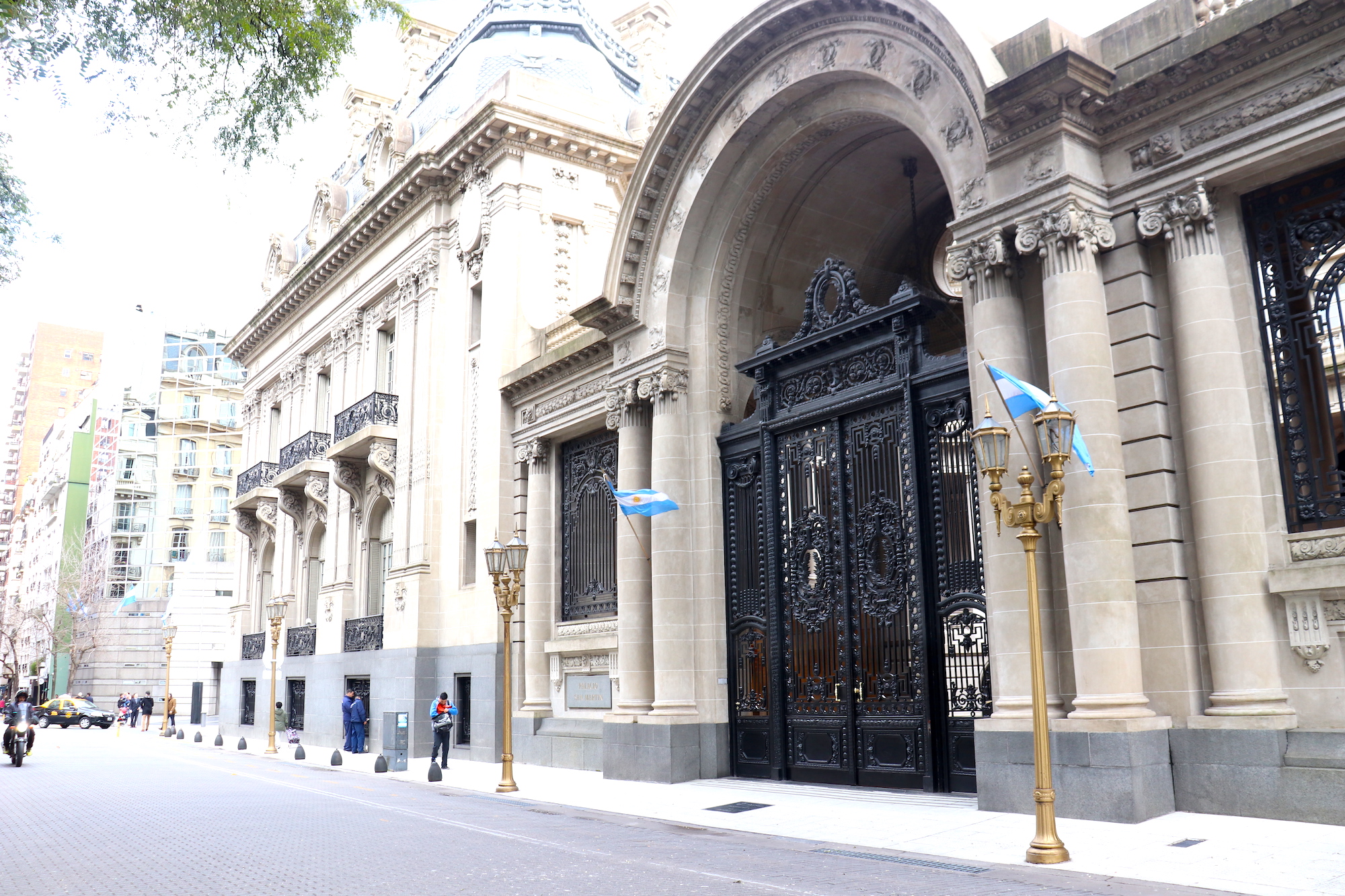
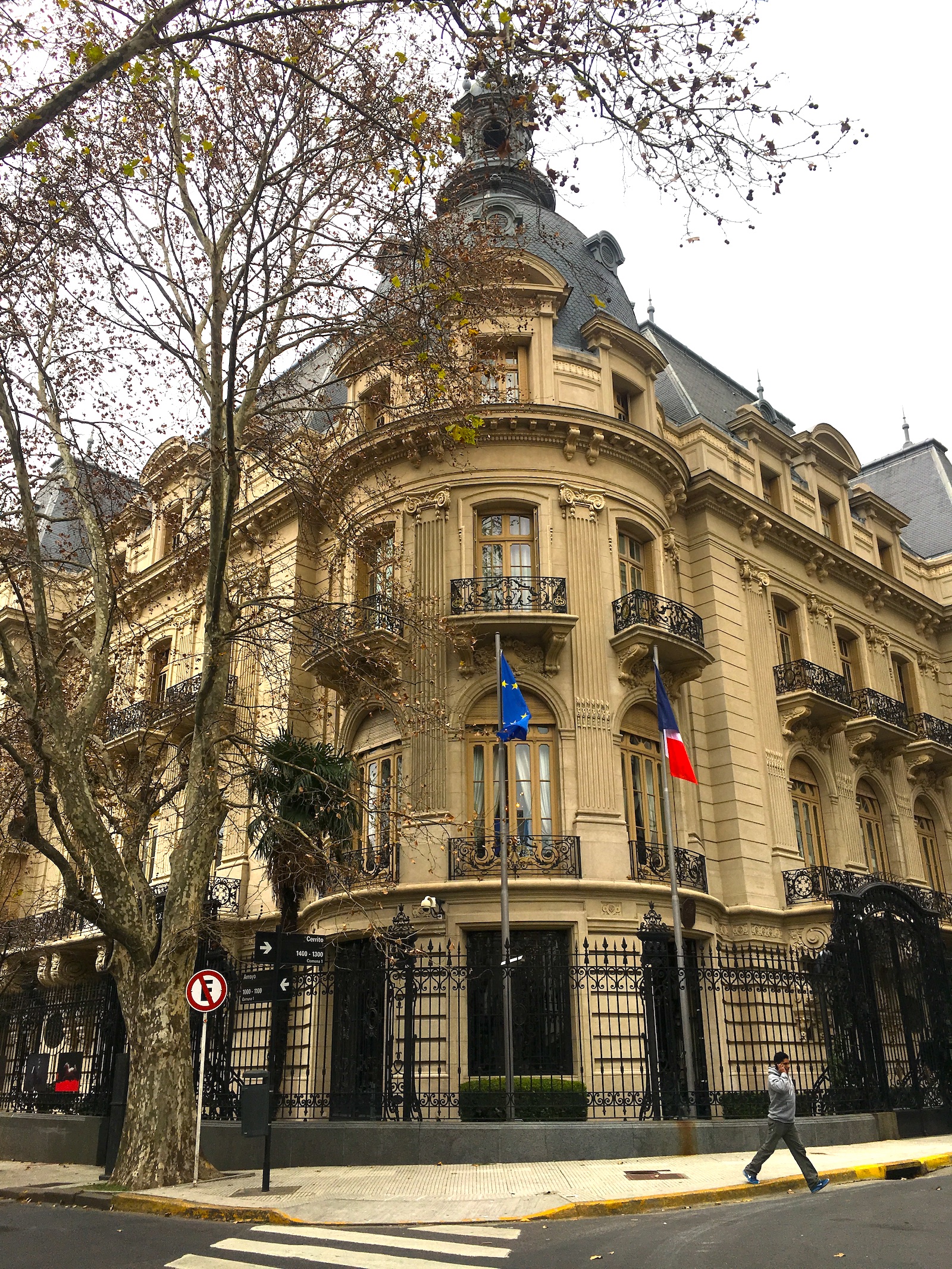
Recoleta Cemetery
We ended the tour at Recoleta cemetery known as the upper class graveyard of the 20th century. It is the place where the tomb of Eva Perón, the wife of the Argentinian president Juan Perón, is located.
I wondered: Why was this woman so venerated? How did she become such a national and international icon with plenty of movies inspired by her persona?
It was absorbing to learn about the influence that Eva Perón had in the history of Argentina. It was insightful to grasp more about her popular culture, her sad death and the aftermath of her death.
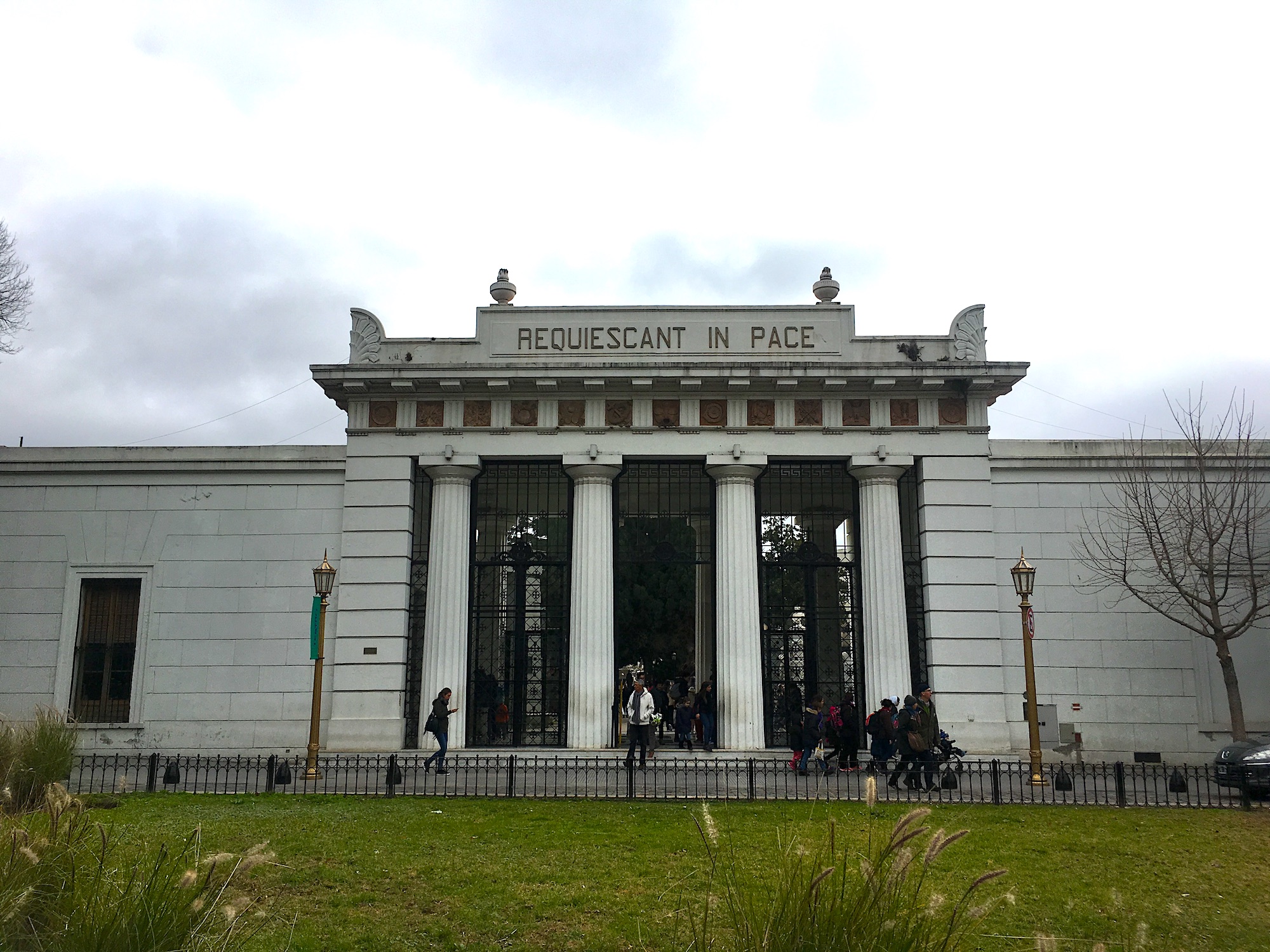
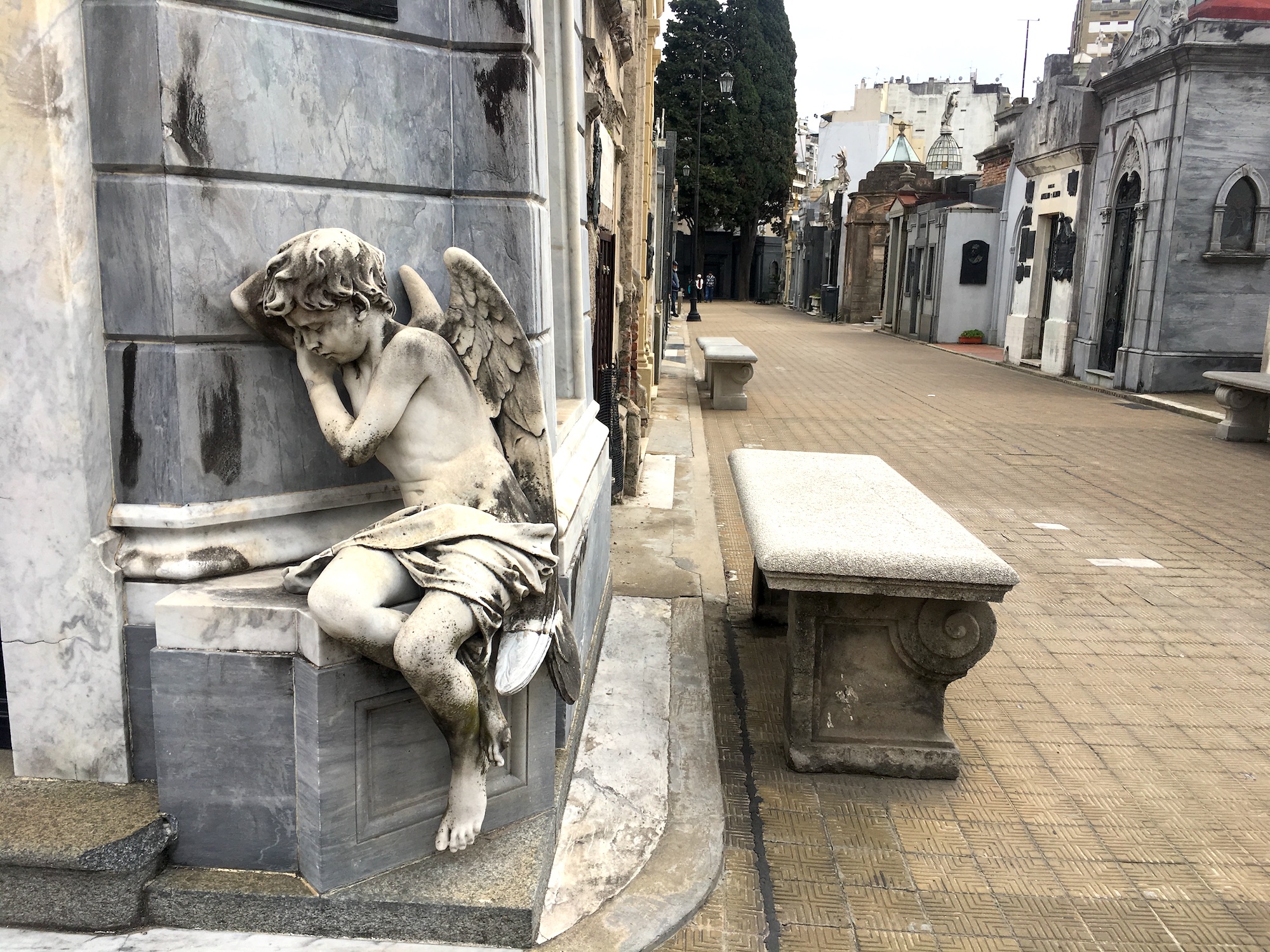
The upbringing of Eva Perón
We learnt that Eva came from a poor family. At that time she was considered an illegitimate daughter. Her father, Juan Duarte left her mother and continued to live with his first wife and children. Because of this Eva Perón suffered her entire childhood. She and her family were marginalized by the society.
“Eva dreamt to become an actress and to make a better future for herself. Therefore she moved to Buenos Aires at the early age of 15 pursuing jobs in acting, radio and theater. Eventually she accomplished her dream becoming a film actress and had success with radio dramas. By 1942 she did so well for herself that she bought her own apartment in the rich neighborhood of Recoleta. Eva also became a co-partner of a local radio”, the tour guide explained.
The marriage with Juan Domingo Perón
Eva's marriage with Juan Perón, the former President of Argentina was what propelled her to the national stage. She married a man, 24 years older than her, one year after they met in a charity event. The following year in 1946, Juan Perón became the President of Argentina. Eva Perón, the actress, became the first lady of Argentina. The tour guide elucidated: "in those times the profession of an actress equaled more or less with a “prostitute”. The bourgeoisie or upper class of Buenos Aires hated her”.
“Coming from a humble background Eva Perón became famous by speaking on behalf of the poor. She was advocating for labor rights and women’s equality in society. Therefore Eva was extremely popular within the working class. Her messages emphasizing the accomplishments of Juan Perón for the “descamisados” were heard daily on her radio program”, we were told.
I came to learn that Eva created her own “Eva Perón Foundation” employing thousands of workers, building homes and hospitals. The foundation offered health services and scholarships. She built the first women party, “Women’s Peronist Party”, promoting the right of women to vote.
The tragic end
It was tragic to learn that after only 6 years from her remarkable political ascent Eva suffered from cervical cancer. She died at the early age of 33.
Eva was a true example of a simple girl that had the courage and stamina to follow her dreams. She gained an incredible political power and used that power to advocate for the rights of the poor. Eva never forgot where she came from.
Few months before her death she was elected the “Spiritual Leader of the Nation” by the Argentine Congress. She was a woman adored not only by her co-nationals, but one that became an international popular culture. I will never forget the musical “Evita” with Madonna interpreting Eva Perón in the main role. That song kept hunting me for years. Maybe that was another reason why I wanted so much to visit Buenos Aires, to get inspired by Eva Perón.
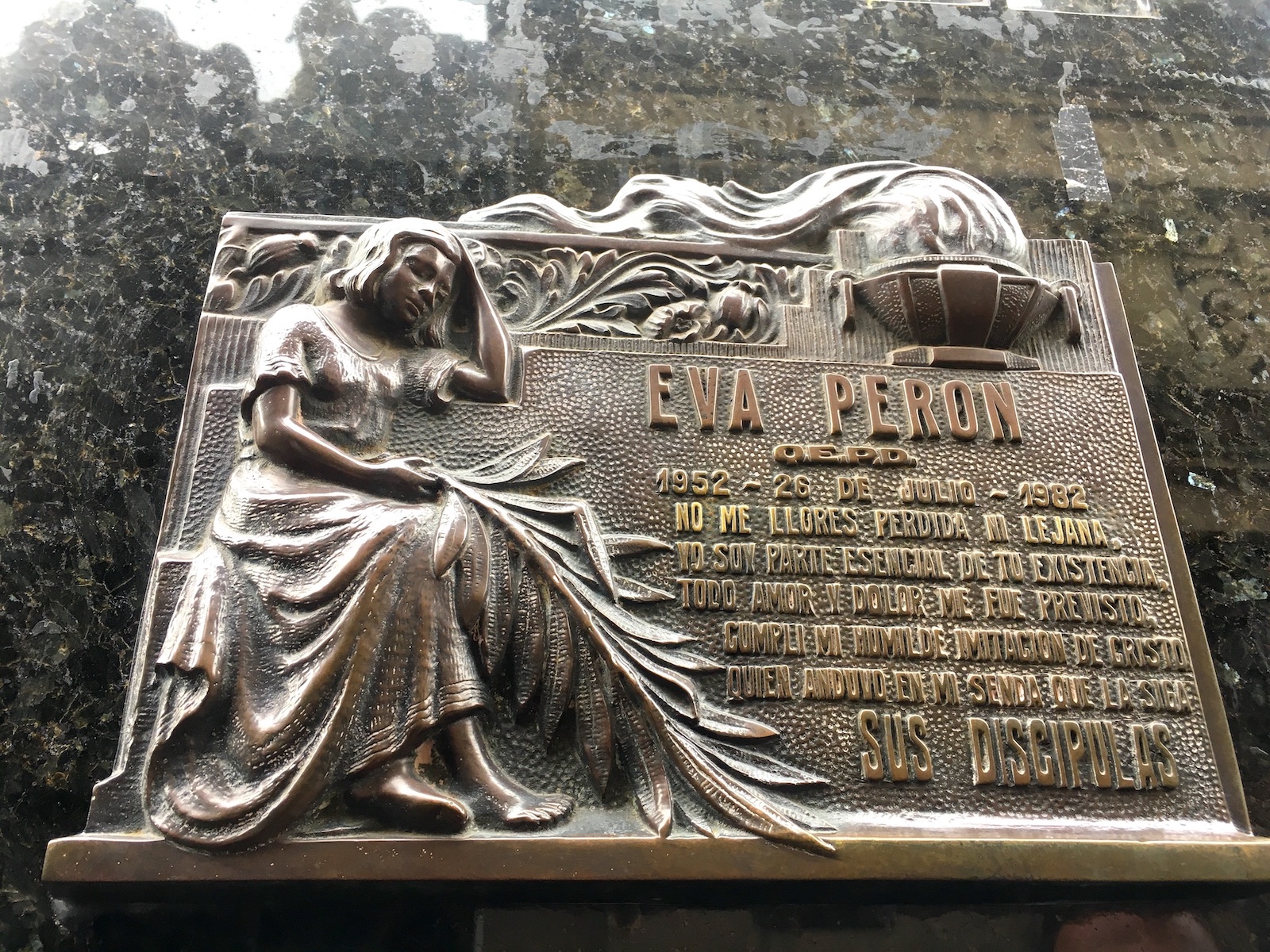
The aftermath of Eva Perón death
“After the fall of Juan Perón from power Eva dead body did not find rest for more than 20 years”, the tour guide explained.
“Fearing the power of her symbol, the opposition sent the body to Italy. She rested in a crypt in Milan under “Maria Maggi” name. They wanted her figure to be erased and forgotten”, we were told.
We learned that her embalmed body suffered a lot of changes during all the movements from South America to Europe. Her face was compressed, the hair cut and her corpse was subject of abuse. There were discovered inappropriate sexual acts conducted by officers in charge of manipulating the dead body.
It 1971 Eva’s body was recovered by Juan Perón and sent to Spain where he was living in exile. “Juan chose to store it for a while in the dining room on a platform near the table. Only after he became for the third time president of the country, Eva’s body was returned back to Buenos Aires”, the tour added.
I was touched by the story. It showed one more time the ugly facade to establish a new regime.
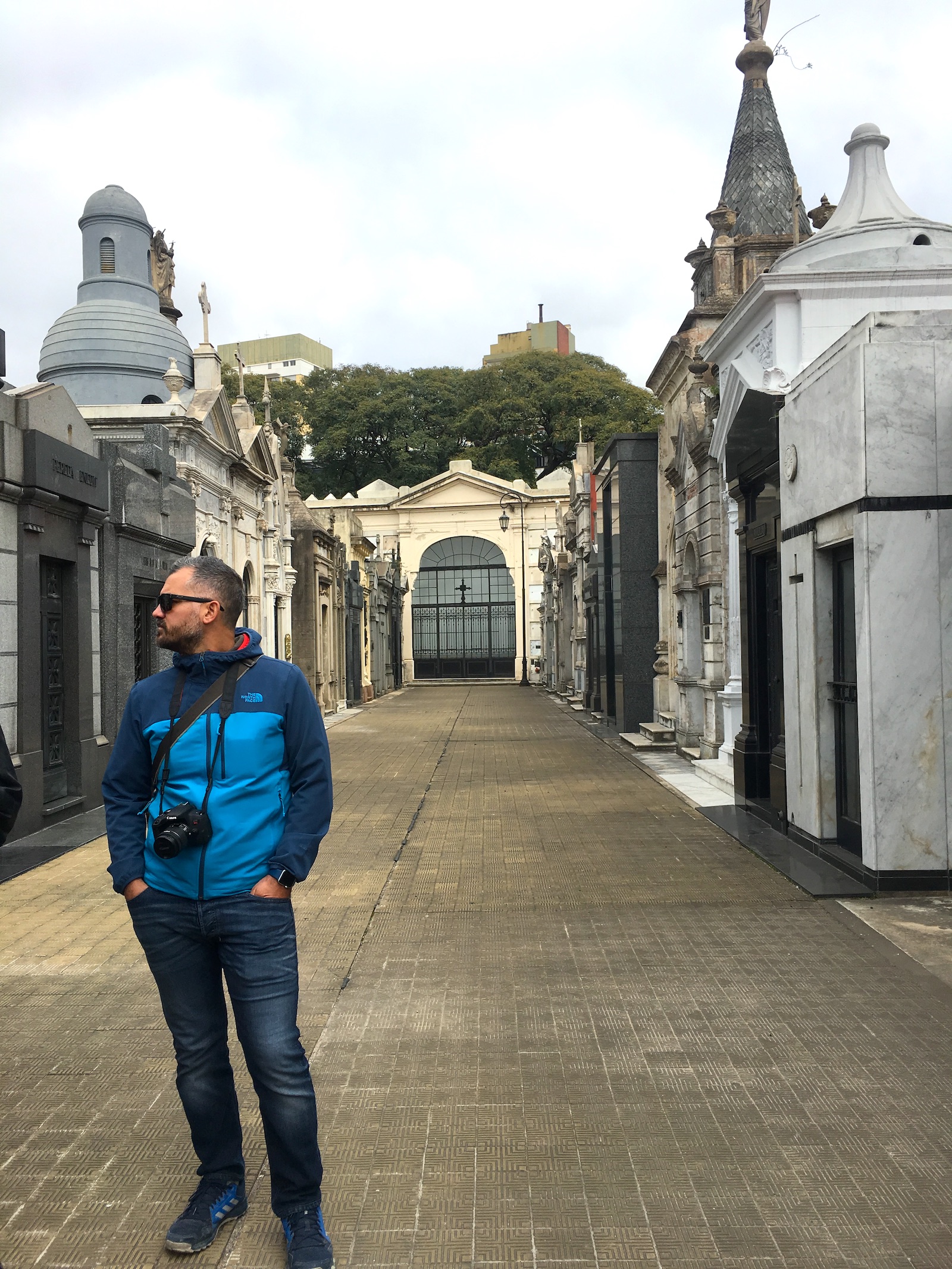
The colorful La Boca district
The following day we chose something more cheerful. We went for a walking tour in the colorful La Boca district, the place where tango dance started. If the previous tour was about the upper class neighborhoods of Buenos Aires, in La Boca we were introduced to the working class district. It is the place where the first European immigrants arrived in the late 19th century.
“With the growth of the flourishing industries there was a considerable wave of European immigrants coming to Argentina. They came in majority from Italy, but as well from Spain, Germany, France, Poland, Serbia, Sweden, Russia, Turkey, Lebanon, Syria. There was an incredible mix of nations, religions and languages. But because most of them came from Italy, the city got a strong Italian heritage. It can be perceived from language, cuisine, music and art”, the tour guide explained.
“How did they manage to get along? So many nations, cultures and languages?” I asked.
“The answer is simple. They found a common language: tango. This is why tango became such a symbol for Argentina”, the guide elucidated.
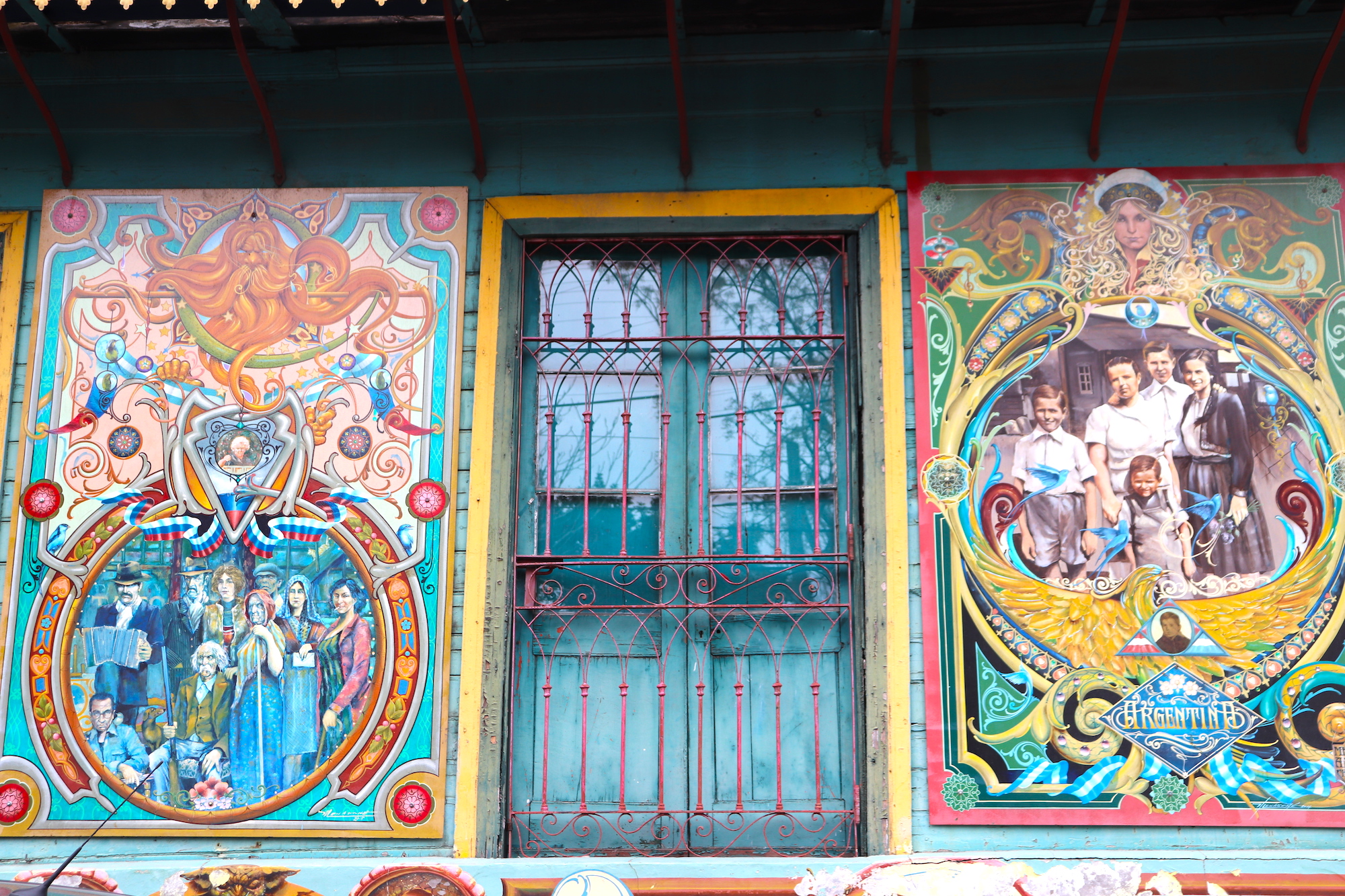
Strolling the streets of La Boca
Strolling the colorful district, my imagination was flowing trying to portray the life of those hopeful people arriving in Argentina.
“How did all those ethnicities and religions get along when they were not dancing :)) ? How did they manage far away from their families with no technology in communication and transportation? Was it difficult to live in those times?”, I was asking JP mostly rhetorically, because we could only imagine.
The joyful wooden buildings tinted in bright colors with big family portraits on them were telling the stories. They expressed the hopes and dreams of those humans in the new and far away land. It showed one more time how adaptable we are and how we can make things work if we have to.
Nowadays La Boca is one of the most vibrant and musical district of Buenos Aires. It attracts hundreds of tourists for its buzzy atmosphere and tango scenes.
How comes there are few African descendants in Argentina?
“There were a lot of African descendants in the mix dating back from the Spanish colonial times. They were brought as slaves in Argentina. In some provinces they were up to 50% of the population up to the 19th century”, the tour guide told us.
“They can’t be noticed so much in nowadays society of Buenos Aires. There are couple of reasons behind. During the War of Independence between the Spanish Empire and the newly formed Argentina, the black people were promised to be set free of slavery. The condition was to fight against the Spanish occupation. Since they were assigned to fight in the first lines of attack, the majority of them died during that period”, we were told.
“Some others died due to cholera, yellow fever epidemics, as well as of the high infant mortality. The big wave of European immigrants in the 20th century created more dominant caucasian features of the population", we were were illuminated by the tour guide.
While the indigenous population that lived before the Spanish invasion were mostly exterminated. Well, that sadly explains …
La Boca Junior
La Boca is not only renowned for its popular culture and bright-colored art. It is famed as well for its “Boca Juniors” football club, one of the top clubs in Argentina. Boca Juniors is the club where the famous football icon, Maradona played.
After some happy pictures with the former football starts of La Boca Club it was about time to end our tour. We chose to celebrate over lunch in a restaurant in San Telmo neighborhood. We indulged into the most popular international cuisine in Argentina, the Italian one. What a treat! I loved that Italian influence in Buenos Aires.
San Telmo
Walking in San Telmo we were enchanted by its aristocratic architecture, pop-up art and antiquities markets. We found plenty of boutique restaurants and artsy cafes.
We continued up to Plaza de Mayo admiring the large city square. The imposing Metropolitan Cathedral and the emblematic Casa Rosada, the “pink office” of the President of Argentina impressed.
I felt I was on Oxford Street of London strolling from Plaza de Mayo towards the Obelisk on Peña Boulevard.
Buenos Aires didn’t stop to inspire us. There was something to discover, something that would tell a story with each street we were passing by. The capital of Argentina had a strong European scent. It was felt from its architecture, cuisine to its educated and well mannered society. Personally I found Buenos Aires the most European city of the South American continent.
Good bye dinner
We chose to end the day in style and have the last dinner in the newly built dockside, Puerto Madero, giving in to more beefsteaks and good times. Uncle Toco could still not get enough of it :))
It was precious to spend those last moments of our journey with our family. Discovering together the multiple facades of Buenos Aires and eating like there was no tomorrow were lovely memories.
As everything in life, what is very good ends fast. Although I was longing for a tango dancing experience or a theater play, we had to round up our short visit. We had to say goodbye to Buenos Aires and to our Brazilian family.
The shipment of Brutus was booked the following day from Montevideo back to Europe. We had to organize our departure by ferry over Rio de la Plata towards Uruguay.
Buenos Aires just opened our appetite to return one day in the capital of art, tango, beefsteakes and good times.
